The Sherman Variants: So Many Shermans, so Confusing! Updated 02/21
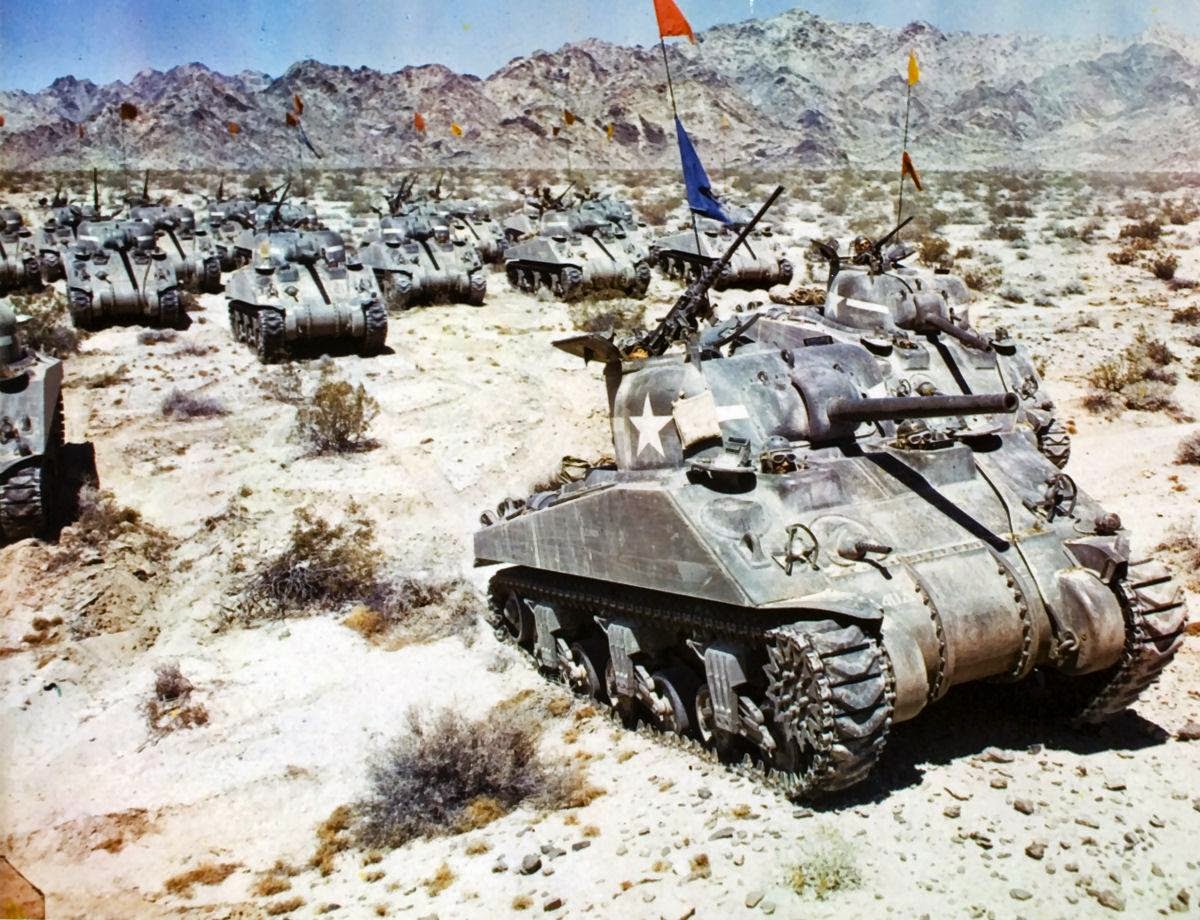
First off, Americans referred to the Sherman as the M4, or M4 Medium, or Medium, the Sherman name was not commonly used until post-WWII. The British came up with the name for the M4 and referred to it with their own designation system that is covered in more detail later. They also named the Lee and Stuart, and at some point, the US Army just stuck with the naming scheme. The full story behind this is still a minor mystery, with US wartime documents confirming the ‘general’ names were at least used on paper by the US Army during the war.
Now let’s cover the factory production versions of the Sherman. Also, keep in mind; it is very hard to define just how a Sherman may be configured without really knowing where and when it was produced. In some rare cases, large hatch hull, 75mm armed Shermans got produced with normal ammo racks, when the norm for large hatch hull tanks was wet ammo racks.
Then you have post-war rebuilds, where the Army swapped 76 turrets onto 75mm M4A3 HVSS hulls during depot level rebuilds. It would not be impossible for a field repair depot to swap a turret, from one knocked out tank, onto the hull of another, making an oddball. You also have to take into account post-war monuments are sometimes Frankenstein tanks, in one case with a T23 turret on a small hatch hull. You can also run into a Frankenstein tank in museums or post-war civilian restorations. In many cases museum tanks are old range relics that need restoration, in some cases, the tank was in decent shape and a cosmetic restoration can easily be done. For the civilian tanker, who wants a running Sherman, also has to get them from a gunnery range, then, the long process of rebuilding the tank can start. I link to a few places that cover restorations, and these guys do amazing work, taking tanks that you could never imagine running or looking like a tank again, and bringing them back to life. We are talking about tanks used as range targets for decades, in some cases, the powertrain in these tanks survived, the powertrain is the transmission, differential, and final drives.
The nice thing about a tank, as far as WWII collectible vehicles go, say compared to an Airplane, like a P-51 or even SNJ, is tanks won’t break down and kill you by falling out of the sky. If you make a big error in a tank, at worst, you’re going to take out a building, flop it on its side, or sink it in deep mud or something, all not really life-threatening. Once you have the tank, running it is going to be a lot cheaper than a vintage aircraft as well. The other nice thing is if you’re handy, you can work on it yourself, without having to get a certified aircraft mechanic to sign off on all your work. You do need a hell of a lot of heavy equipment to really work on a tank though, but you don’t have annuals and hanger rental costs! This may be why the hobby of owning a tank is becoming more popular in the United States!
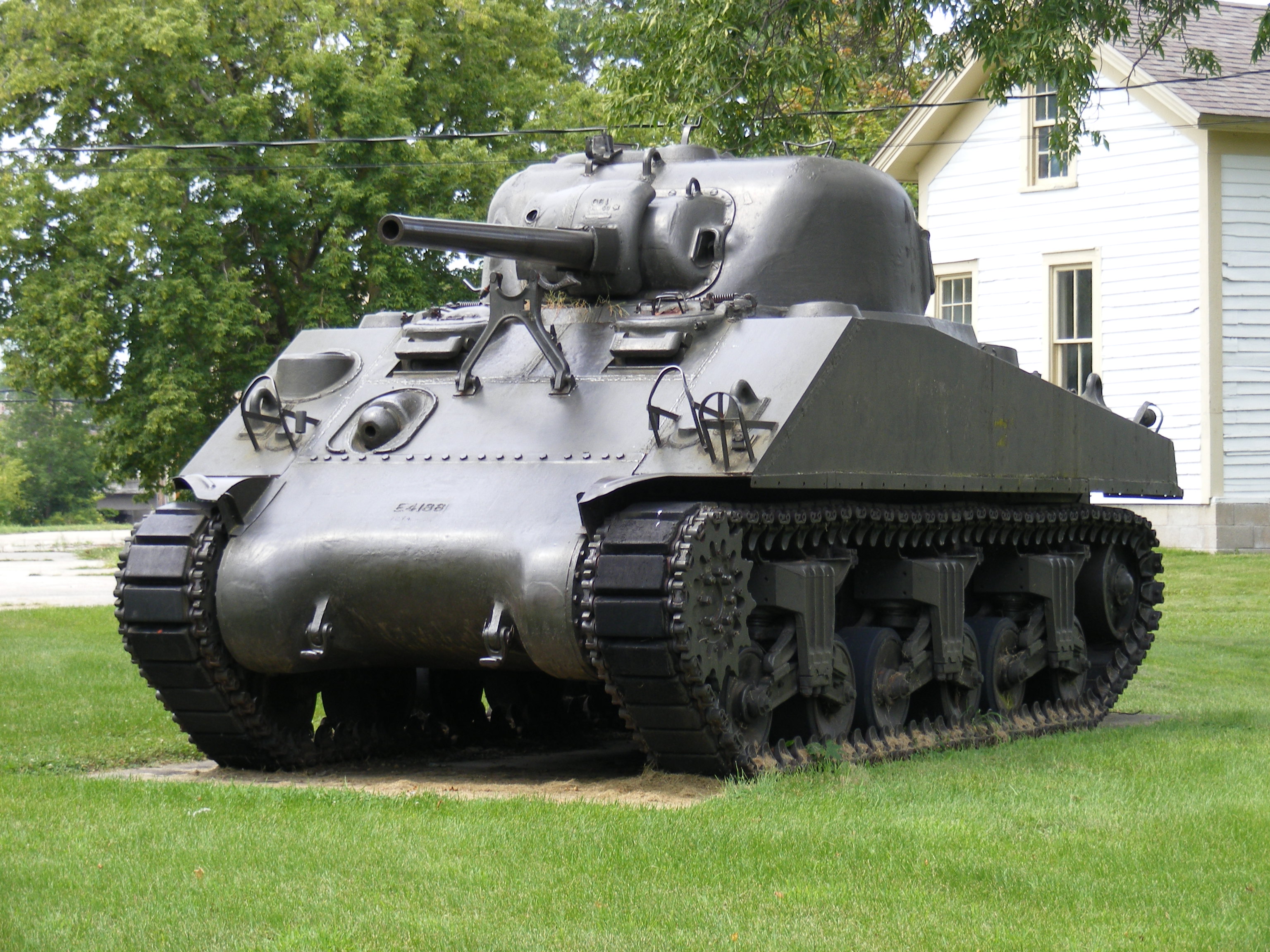
M4 Sherman: First in Name, 4th Into Production.
Click the link above to go to the page dedicated to the M4.
These tanks used the same R975 motor as the M3 and M3A1. The vast majority of the bugs in this automotive system were worked out before the M4 even started production. This really helped give the Sherman its reputation for reliability and ease of repair. The M4 had a welded hull with a cast turret mounting the M3, 75mm gun. Early variants had three hull machine guns, and two, turret-mounted machine guns. The hull guns were all M1919A4.30 caliber machine guns, two fixed, and one mounted in a ball mount for the co-driver’s use. The fixed guns were deleted from production very rapidly. The turret armament remained unchanged for the whole production run: Using the M3 75mm gun with the M1919A4 coaxial machine gun and M2 .50 caliber mounted on the roof. The turret would be the same turret used on all early Shermans and would be interchangeable on all production Shermans. This version was not produced with the later improved T23 turret but did get some large hatch hulls in special variants.
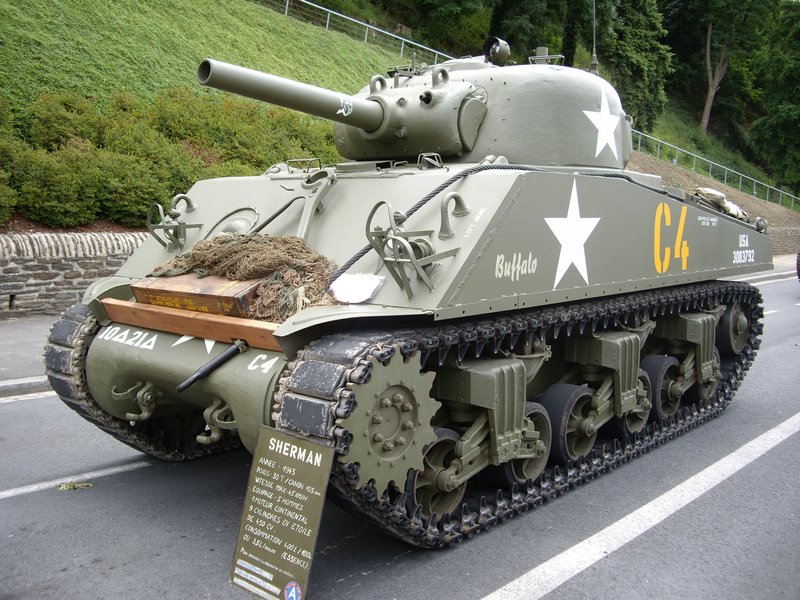
There were two variants of the M4 to be built with the large hatch hull. The first, the M4 (105) was a large hatch hull mated to the 105mm howitzer, on the M52 mount, in the standard 75mm turret. These hulls did not have wet ammo racks or gyro stabilizers, and the 105mm turrets had an extra armored ventilator, the only turrets to have them. The M4 (105) gun tanks had a special mantlet, with four large screws in the face, unique to 105 tanks. Production started in February of 44, and continued well into 45, with late production M4 (105) tanks getting HVSS suspension. These tanks were used as replacements for the M7 Priest in tank units and spent most of their time being used as indirect fire support, like the M7 they replaced. These tanks also had exhaust deflecting vents installed in the back to help reduce dust from being stirred up.
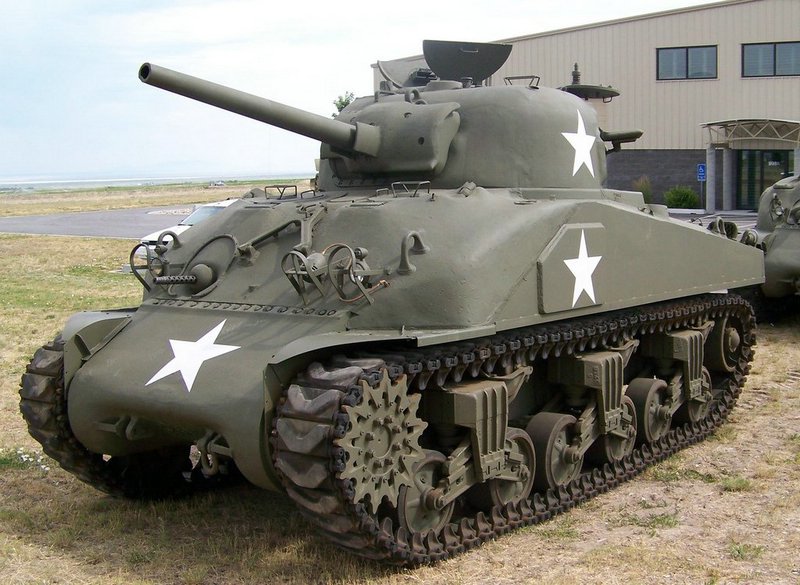
One other variant of the M4 to get the large hatch hull(100 or so small hatch casting were made as well) was the M4 ‘hybrid’, this hull was welded, but used a large casting very similar to the front of the M4A1 on the front of the hull. It was found that most of the welding hours building the welded hull tanks were spent on the glacis plate. They figured out by using one large casting, incorporating the hatches and bow gun would save on welding time and labor costs.
These M4 hybrids were used by the British to make Ic Fireflies. They liked the 75mm turret these tanks came with since many already had a loaders hatch, this saved them time on the conversion since they didn’t have to cut one. Most of the M4 composite tanks were shipped to Europe or the Pacific, making survivors rare.
The M4 along with the M4A1 was the preferred US Army version of the Sherman until the acceptance of the M4A3. This tank was made in five factories from July of 42 to March of 45, 7584 produced. As far as the US Army was concerned, the M4 and M4A1 were interchangeable.
M4A1 Sherman: First Into Production, And When It Did Go, It Was The Most Advanced Tank In The World.
Click the link above for a dedicated page on the M4A1
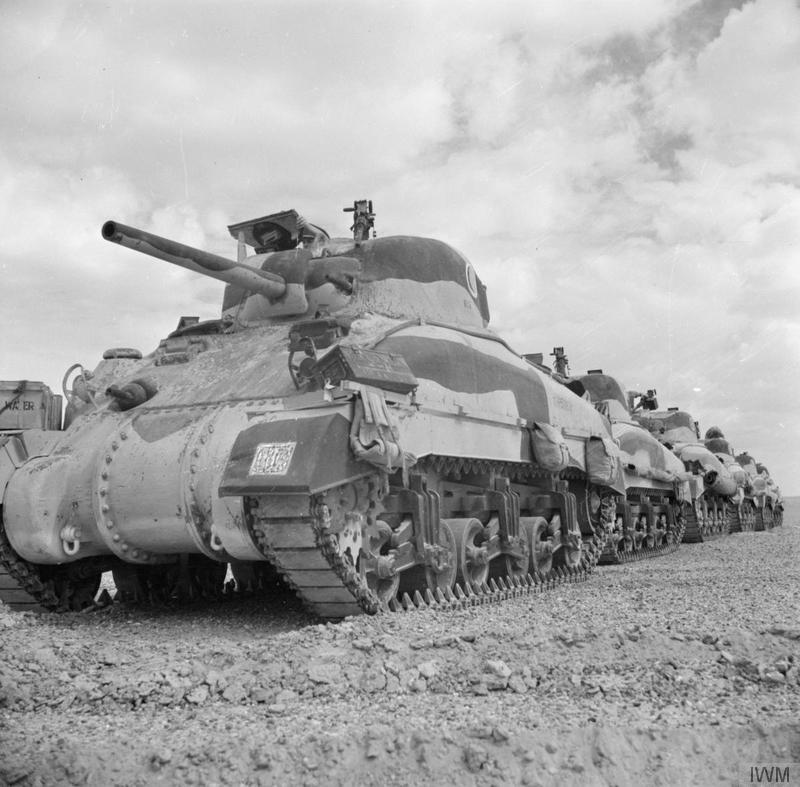
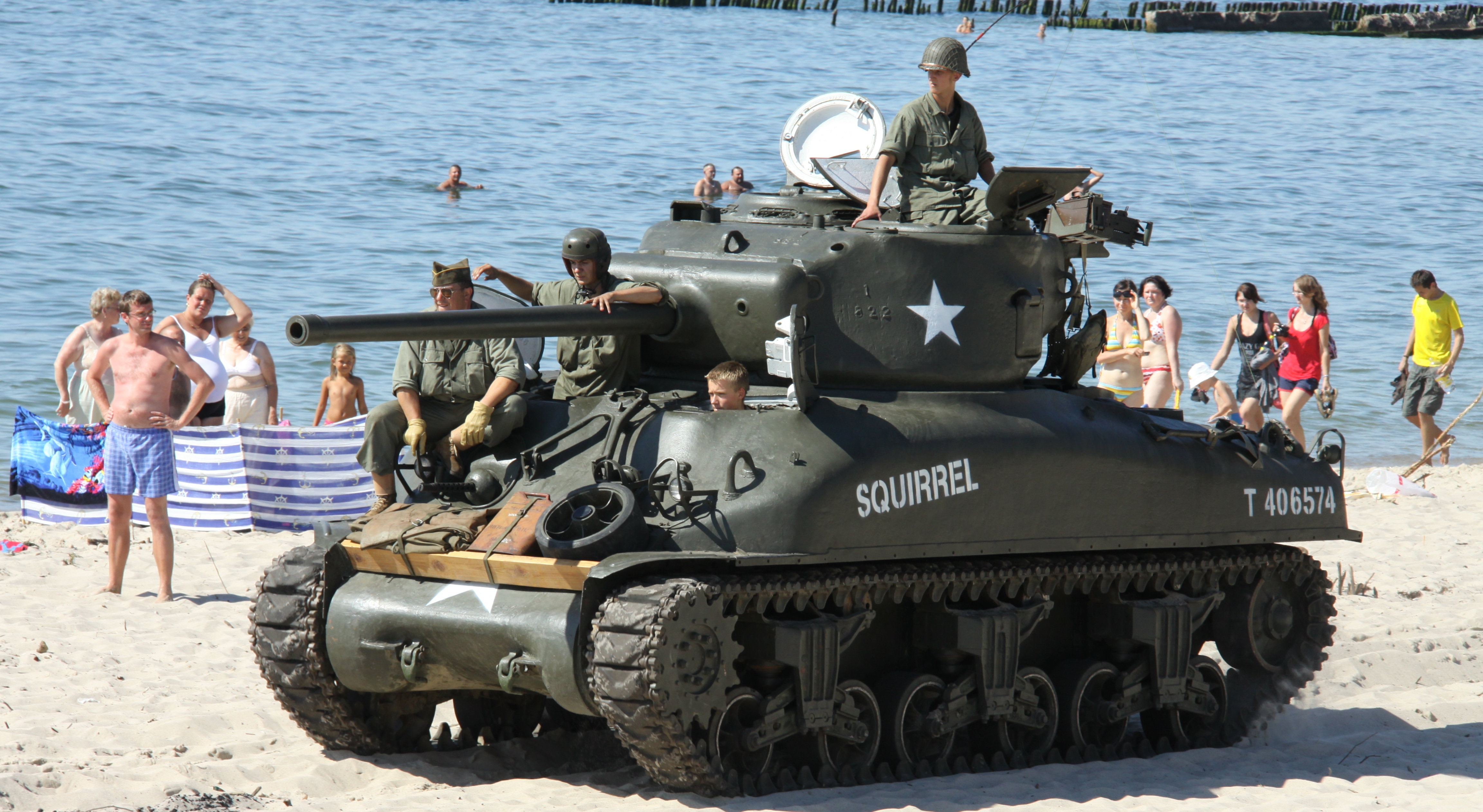
This was virtually the same tank as the M4, with the same motor and automotive systems and armament. The manual for the tank was even shared between the M4 and M4A1. The key difference was the cast upper hull. This huge upper hull casting was one piece. This was a very hard thing to do with casting technology at the time, and something the Germans could not have reproduced, they lacked the advanced technology, and facilities needed to do so. Everything from hatches to wheels, and turrets, and guns were interchangeable with the M4 and other Sherman models. This version saw production longer than any other hull type. It also saw all the upgrades like the improved large hatch hull with wet ammo racks, the T23 turret with 76mm gun, and the HVSS suspension system. It was 30 of these M4A1 76 HVSS tanks that were the last Shermans ever produced. The M4A1 was also the first to see combat use with the improved M1 gun and T23 turret during operation Cobra. These tanks would also be the basis for the Israeli M51 Sherman. Three factories produced 9527 M4A1s with all turret types from Feb 42 to July of 45.
The US Marines used one battalion of these tanks on the Cape Gloucester campaign, all small hatch M4A1 75 tanks. This was the only use of this type by the U.S. Marines.
For more information on the M4A1 76w tanks, click here.
M4A2 Sherman: The Second Sherman Into Production!
Click the link above for a dedicated page to the M4A2
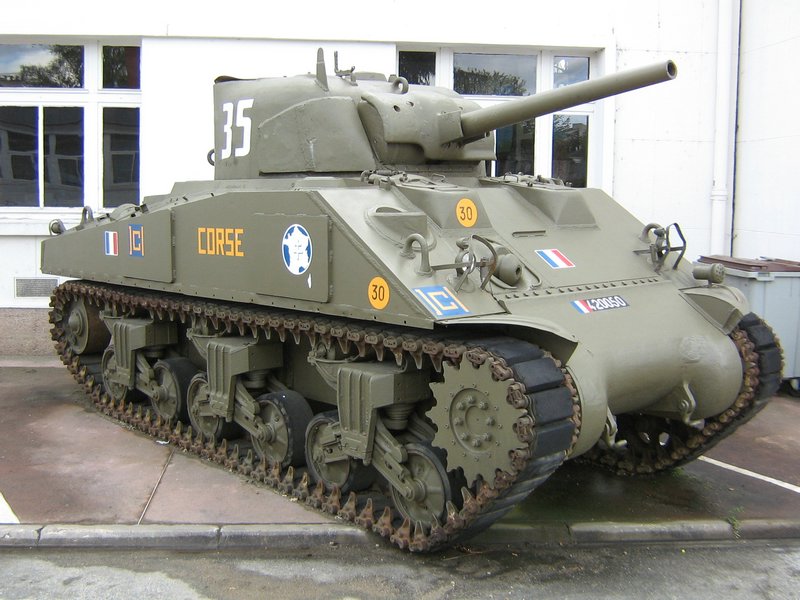

This version of the Sherman used a welded hull nearly identical to the M4, but with a pair of vented armored grates on the rear hull deck. The M4A2 tanks used the GM 6046 twin diesel. This version was produced with all the improvements the other types got, like the large hatch hull with wet ammo racks, the T23 turret with an improved M1 gun, and HVSS suspension. This version would see very limited combat in US hands, most being shipped to Russia with a few early hulls going to the Brits and USMC. This was the preferred version for Soviet lend-lease deliveries since the USSR was using all diesel tanks. It was produced in six factories with 10,968 of all turret types produced from April of 42 to July 45.
A little trivia about this version, the Sherman used in the movie Fury, was actually a late production M4A2 76 HVSS tank. The only way you can tell a late A2 from a late A3 is by the size of the armored grills on the back deck. They did a great job of hiding this area in the movie.
The Marines operated a lot of small hatch M4A2 and a fairly large number of large hatch M4A2 tanks until the supply of 75mm armed versions dried up in late 1944. Then they switched over to large hatch M4A3 75w tanks, but there were some A2 holdouts amongst the six battalions.
For more information on the M4A2 76w tanks, click here.
M4A3 Sherman: The Best Version Of The Sherman, Both in 75mm and 76mm
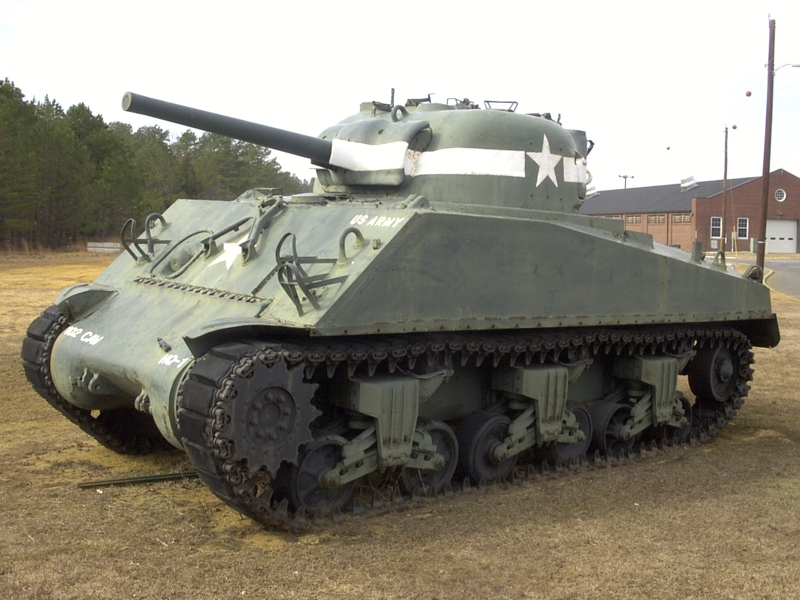
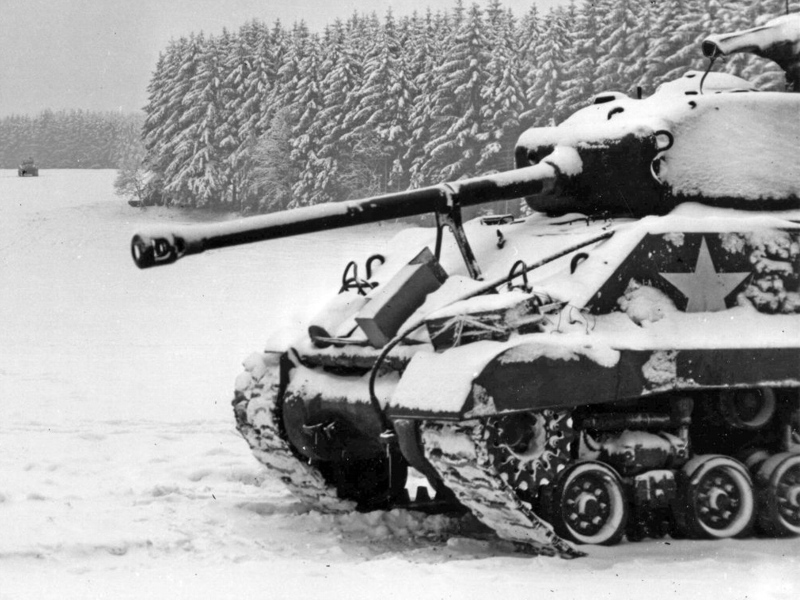
This would be the base for what would be the final Sherman in US Army use, seeing action all the way out to the Korean War in US Army hands. This tank had a welded hull just like the M4, A2, and A4, but used a new motor. The Ford GAA V8, this motor took some time for its bugs to be worked out, so unlike say, the Nazi Germans, the US Army didn’t use it until it was ready for serious production. When it was, it became the preferred US Army version of the tank in both the 75mm and 76mm armed tanks. It would see all the improvements, and be the first hull type to take the HVSS suspension system into combat for the US Army. The M4A3E8 or M4A3 tank with the T23 turret and HVSS suspension bolted on would be the final and ultimate US Army Sherman. It would be produced in three factories with all turret types, 12,596 built-in total between June 42 and June of 45.
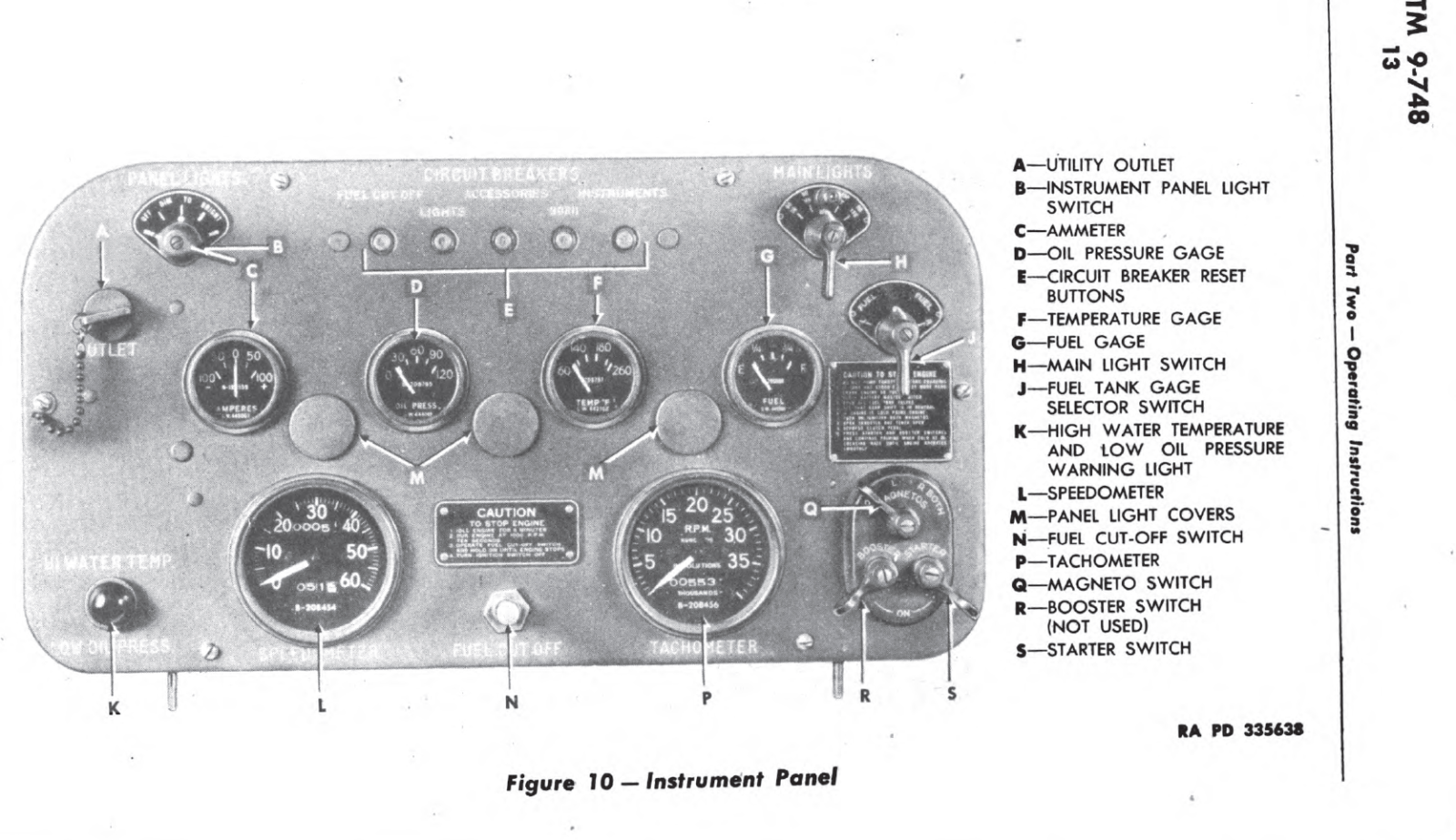
After WWII when the Army wanted to standardize on one Sherman type, any M4A3 large hatch hull they could find would have a T23 turret and HVSS suspension installed on it. The Army was so thorough in these conversions no M4A3 large hatch 75mm gun tanks are known to have survived with the original turrets installed. Any M4A1 HVSS 76 and M4A2 HVSS 76 tanks in Army inventory would have been robbed of their suspensions and turrets so they could be installed on M4A3 large hatch hulls.
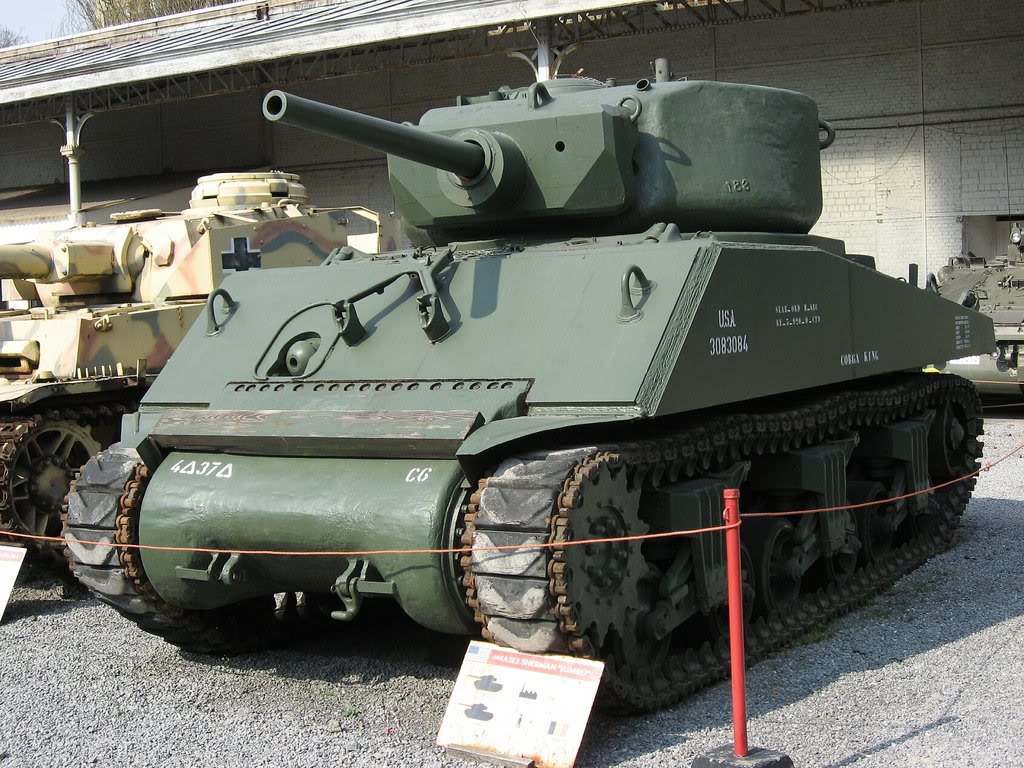
M4A3E2 Jumbo
The M4A3E2 Jumbo: Fishers Fat and Special Baby!
FTA was the sole producer of one very special variant of the Sherman, the M4A3E2 Jumbo. This version of the Sherman was the assault Sherman, though not expressly designed for it, was manufactured to be able to lead a column up a road and take a few hits from German AT guns or tanks so they could be spotted without having to sacrifice the tank. It had a lot of extra armor, and could take a lot of hits before being knocked out, but was still not impervious to German AT gunfire. Only 254 of these tanks were produced, and all but four were shipped to Europe for use by the US Army. They were all armed with the M3 75mm gun. There was a surplus of M1A1 76mm guns in Europe due to an aborted program to rearm 75mm Sherman tanks with the guns. Many of the Jumbo’s ended up with these guns, but none were ever factory installed.
The tank was no different in automotive components from the M4A3 tanks, with the sole difference being the slightly lower final drive gear ratio, going from a 2.84:1 ratio in the base Shermans to 3.36:1 on the Jumbos. This reduced the top speed slightly but helped the tank get all the extra armor moving. The Jumbos were well-liked by their crews and in great demand; no more were built, the only batch being produced from May to July of 1944. Had the invasion of Japan been needed, a special Jumbo with a larger turret that included a flamethrower was considered, but we all know how that story ended.
. . .
The M4A3 (75)w and later 105 was issued to the Marines when the M4A2 75mm tanks went out of production. These would all have been large hatch M4A3 75w tanks, and they may have gotten some with HVSS.
M4A4 Sherman: The Sherman No One Wanted At First, But In The End Was A Very Important Model, At Least To The British.
Click the link above for a dedicated page on the M4A4.
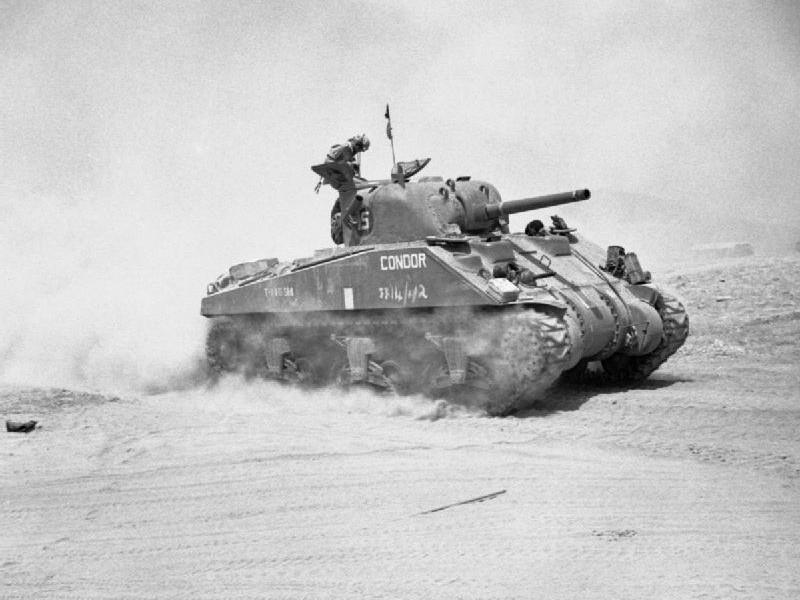
This tank is the oddball of Sherman tanks. It had a welded hull and used the A-57 multibank motor. A tank motor made from combining five car motors on one crankcase. As complicated as this sounds, it was produced in large numbers and was reliable enough to see combat use, though not in American hands in most cases. In US use they tried to limit it to stateside training duty. The Brits found it more reliable than their native power plants and liked it just fine. The A4 version never got the improved large hatch hull or T23 turret with the M1 gun. Most were shipped to the Brits via lend-lease and many were turned into Vc Fireflies, making it the most common Firefly type. The US Marines operating these tanks in the states as training tanks, 22 of them for two months before they were replaced by M4A2s. This tank had a longer hull, like its Lee cousin to accommodate the big A-57 motor. It was the first Sherman version to go out of production. It was produced in one factory (CDA) from July of 42 to November of 43 with 7499 built.
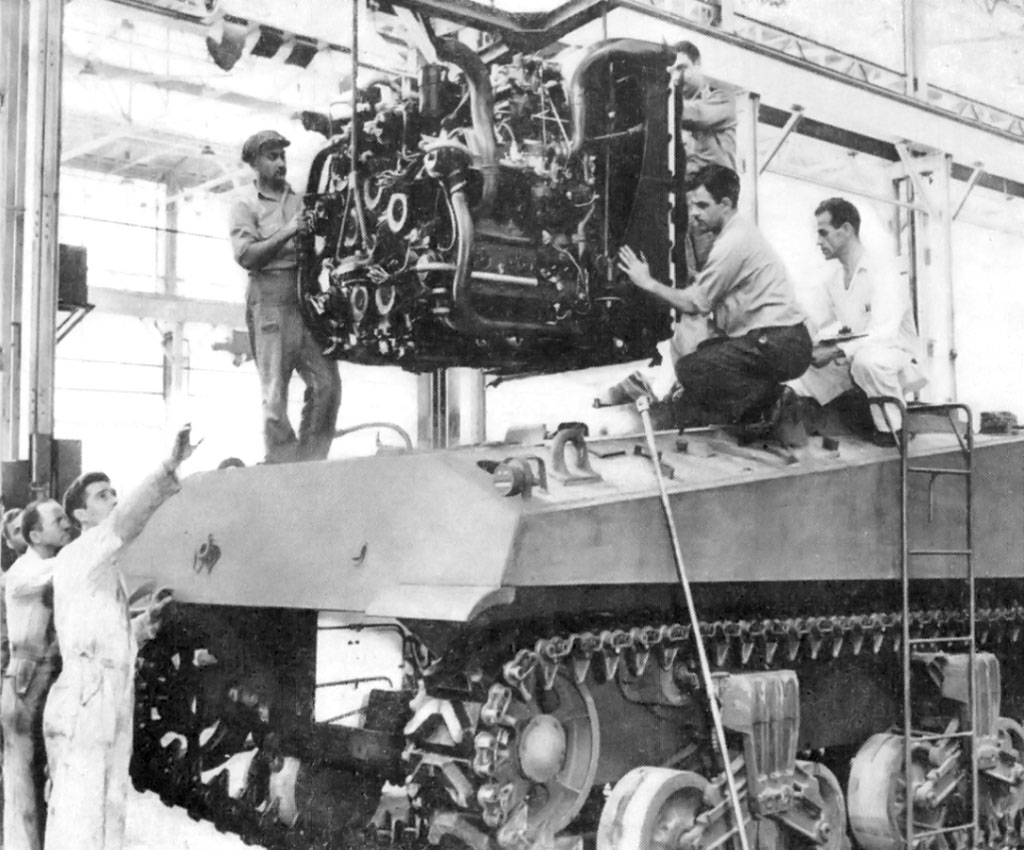
The A4 has the honor of being the heaviest and largest standard Sherman. The larger hull to accommodate the A57 motor, and the motor itself added weight. The British used these tanks extensively in combat. These tanks show up in British test reports as well, often pitted against tanks like the Cromwell, in reliability or other tests, and usually coming out ahead. Anyone who has ever changed the spark plugs on their car should really be able to appreciate how hard a motor made by tying five six cylinder automobile engines together, on one crank would be. It is easy to identify an A4 from the side, there’s a bulge on the engine deck just behind the turret, and a bulge in the belly in the same place, both to house a huge cooling fan. The bogie assemblies are spaced further apart, this is very obvious compared to the rest of the Sherman models, and also required a longer set of tracks. These longer tracks spread the added weight out, so it had no effect on flotation.
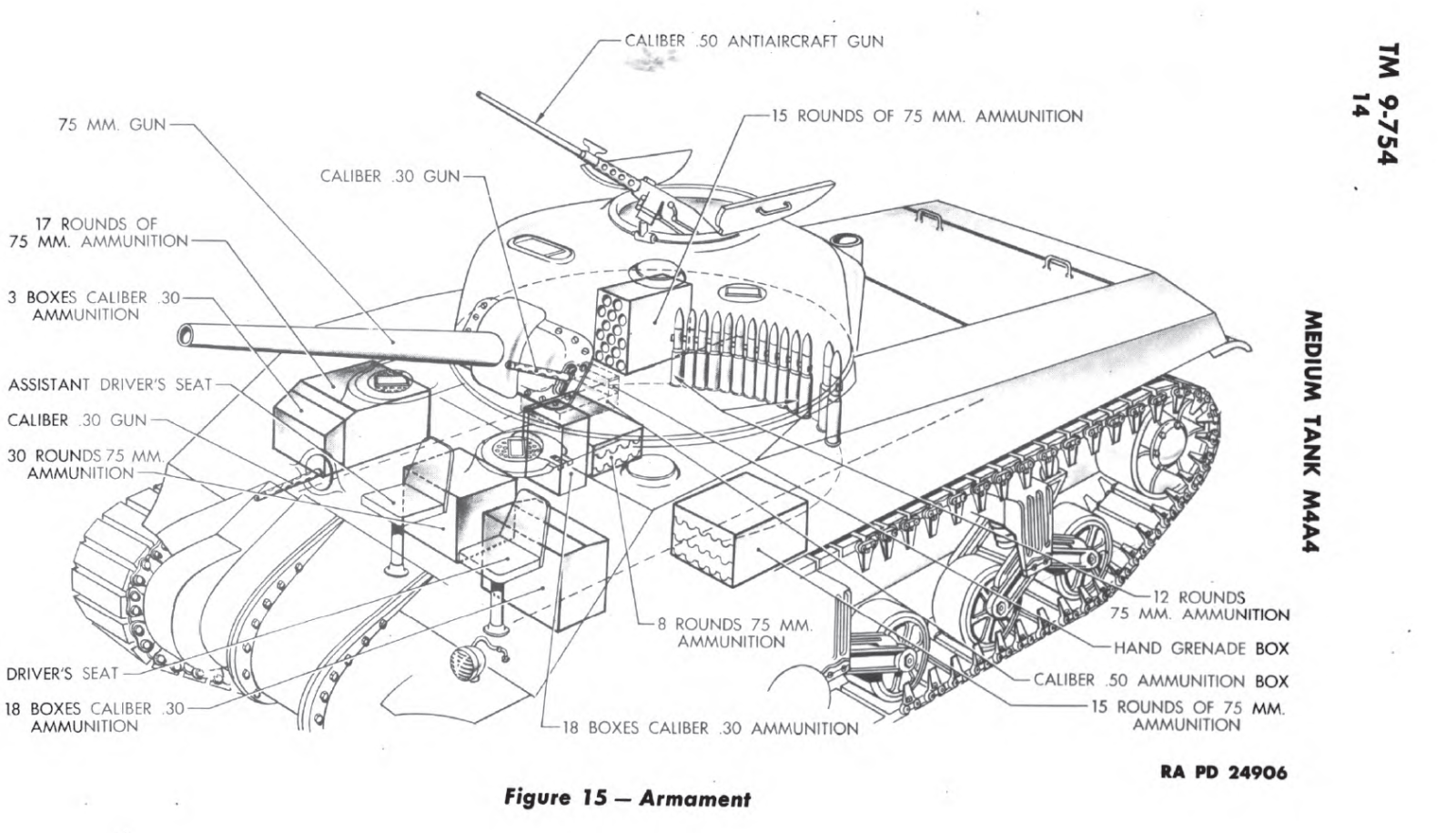
It turns out this version of the Sherman served with more nations than any other version! These include Britain, Canada, South Africa, New Zealand, Czechoslovakia, India, China and the USA, all used this tank in combat at some point. I find it very interesting the most complicated Sherman saw such widespread use, and still earned a reputation for reliability second to none. The majority of the British Shermans on D-Day were this model as well.
For a tank the US Army didn’t want, it had an excellent combat record, with the nations that got stuck with it. The M4A4 is one of the rarest Shermans to find running with its original motor. The A57 would be very troublesome to keep running for a civilian hobbyist, and I have my doubts about how easy it is to get Chrysler inline-six parts in Europe. Few M4A4’s remained in the United States since the ones used in training were refurbished by Chrysler and then shipped off to the UK for conversion to Fireflies.
. . .
All Sherman variants share a lot of details and most spare parts interchange. Only the motors really call for different parts. All early Sherman tanks had 51mm of armor at 56 degrees on the front hull, and 76mm on the front of the turret. The 56-degree hulls are called small hatch hulls because the driver and co-driver had small hatches that forced them to twist sideways to get in and out. They also started out with direct vision ports along with periscopes for crew vision. Even the cast tanks matched these specs and the hatches from a cast tank could be used on a welded tank. These early hulls had some of the ammo racks in the sponsons above the tracks. Not a great place for ammo, but not an uncommon one for it either. As they improved the hull, they added plates over the direct vision ports and eventually removed them from the castings. Large plates were eventually welded over the ammo racks on the sides, and this extra armor was eventually just added to the casting on the cast hulls. It’s safe to say no small hatch tanks were factory produced with a 76mm gun or improved T23 turret.
The major hull change came when they upgraded the drivers and co-drivers hatch making them bigger. They also thickened the front armor to 64mm but reduced the slope to 47 degrees to fit the new driver’s hatches. The M4 (hybrid and 105 only), M4A1, A2, and A3 were produced with these improved large hatch hulls. Many of these improved large hull tanks had the original 75mm gun and turret. Even the M4A3 with HVSS suspension was produced with the 75mm gun and turret. Most of the large hatch production was with the new and improved T23 turret. These larger hatch hulls would still accept the majority of the spares the older hulls used and the lower hull remained largely unchanged and would accept all the suspension types. Any large hatch M4A3 hull was likely converted to an M4A3 76 HVSS post-WWII.
Through the whole production run, minor details were changed. The suspension saw many different versions before the final HVSS type was produced. The track types also changed and there were many variants made of rubber and steel or steel. There were even at least six different types of road wheel! There are so many minor detail changes, the scope is too big to cover in this post, needless to say, the only other tank I know of with so many minor changes over the production run was the Tiger, and in the Tigers case, it’s just sad, with so few produced, it means almost no two tigers were the same. This was not the case for the Shermans and the changes did not slow production down at all and in many cases were just different because a particular part, like an antenna mount, or driver’s hood, could have been sourced from a different sub-contractor, and the parts may look different but would function exactly the same. Tiger parts are not good at interchanging without modification, and a crew of craftsmen to custom fit them. The changes made to the Sherman were either to incorporate better parts or to use a locally made substitute part for one in short supply, so making their own version allowed them to continue production without a slowdown.
To really get a handle on these differences between Sherman models there are two really great sources.
This is the easy, way: Sherman Minutia site a great site that really covers the minor detail changes on the Sherman tank very well. You can spend hours reading it and looking over the pictures. It explains little of the combat history of the Sherman but covers the minor changes on the vehicles themselves very well. You can spend hours on this site learning about minor Sherman details. It is also a primary source for this post.
Another great way is to get a copy of Son of a Sherman volume one, The Sherman design and Development by Patrick Stansell and Kurt Laughlin. This book is a must-have for the Sherman plastic modeler or true enthusiast. It is filled with the tiny detail changes that took place on the Sherman production lines from start to finish. They cover everything from lifting eyes to ventilators, casting numbers, to the most minor changes to the turrets. Get it now before it goes out of print and the price skyrockets. I liked it so much I bought two!
The turret saw the continual change as well but remained basically the same. The 75mm gun never changed but its mount and sighting system did. The turret lost the pistol port and then gained it back. It gained a rotor shield over time and an extra hatch. All these detail changes are covered on the site above and in the Son of a Sherman book. The important thing to note was the tank saw continual improvement to an already reliable, and easy to produce design. The Sherman was easy to produce for an industrial nation like the USA, but beyond Nazi Germany’s technical capabilities for several reasons, like large casting and the gun stabilization system, or even multiple reliable motors to power the tens of thousands of tanks made.
In the basics section, I’m only going to cover one more thing. The Sherman tank was not as blind as the tanks it faced. The M4 series, from the first production tank to the final Sherman that rolled off any of the production lines, were covered in periscopes or viewports for the crew. The gunner had a wide-angle periscope that had incorporated the site for the main gun, and they very quickly added a telescopic sight to go with it. The commander had a large rotating periscope in his rotating copula. The loader had a rotating periscope and the driver and co-driver had two, one in their hatch, and another mounted in the hull right in front of them once the DV ports were deleted (non-rotating). The later version added a direct vision cupola and a periscope for the loader in his new hatch. All these periscopes could be lowered and the port closed, and if damage easily and quickly replaced from inside the tank. All this gave the Sherman an advantage in spotting things outside the tank; they were still blind, just not as blind as most of the tanks they would face. Finding an AT gun in a bush could be very challenging for any tank, and infantry, if not scared off by the presence of a tank in the first place, can sneak up on one pretty easily. More ways to see out of the tank was the only thing to help with this. That, and well-trained infantry, who stay with the tank.
This was a big advantage when it saw combat and throughout the tank’s career, it was always one of the best if not the best tank of the war. It was reliable, the crew had a good chance of spotting enemies before other tank crews, the gun was stabilized, fast firing, and accurate. It was as good or better than most of the tanks it faced, even the larger German tanks. These tanks were largely failures, with only long debunked Nazi propaganda propping up their war record. The Sherman has the opposite problem.
Sources: Armored Thunderbolt by Zaloga, Sherman by Hunnicutt, Combat Lessons, Son of a Sherman by Stansell and Laughlin, M4 Sherman tank at war by Green, Tanks are a Might Fine Thing by Stout, TM9-752, TM9-754, TM9-759, TM9-731B, TM9-731A
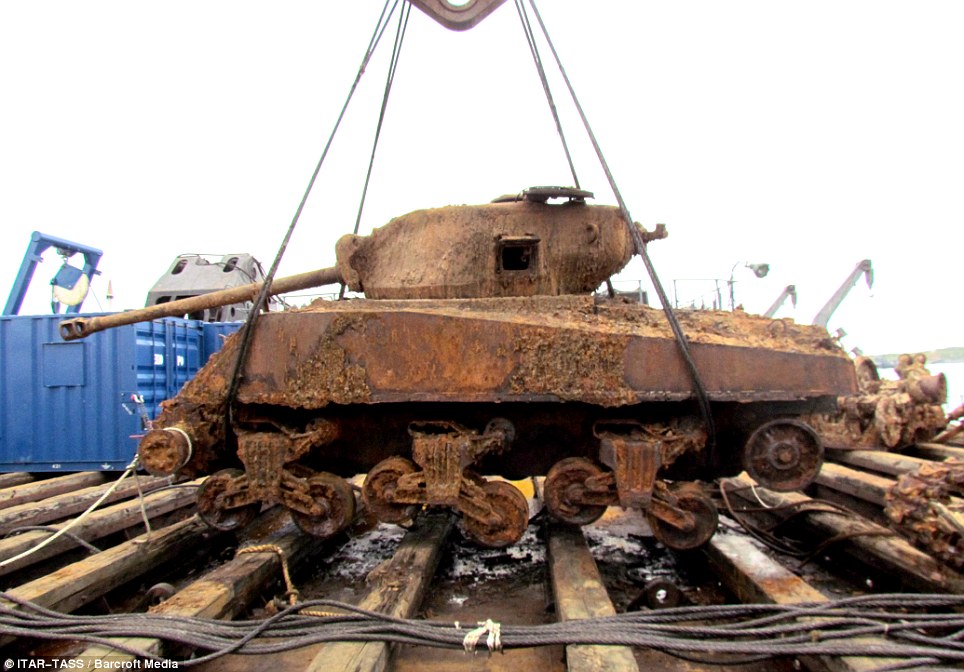
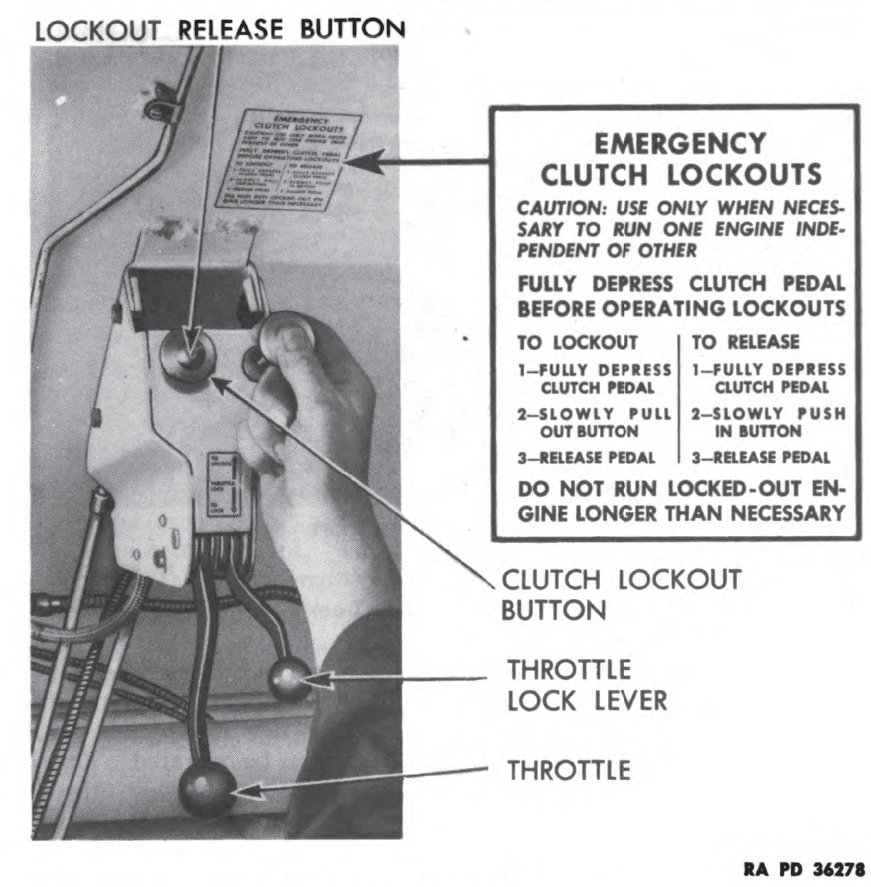
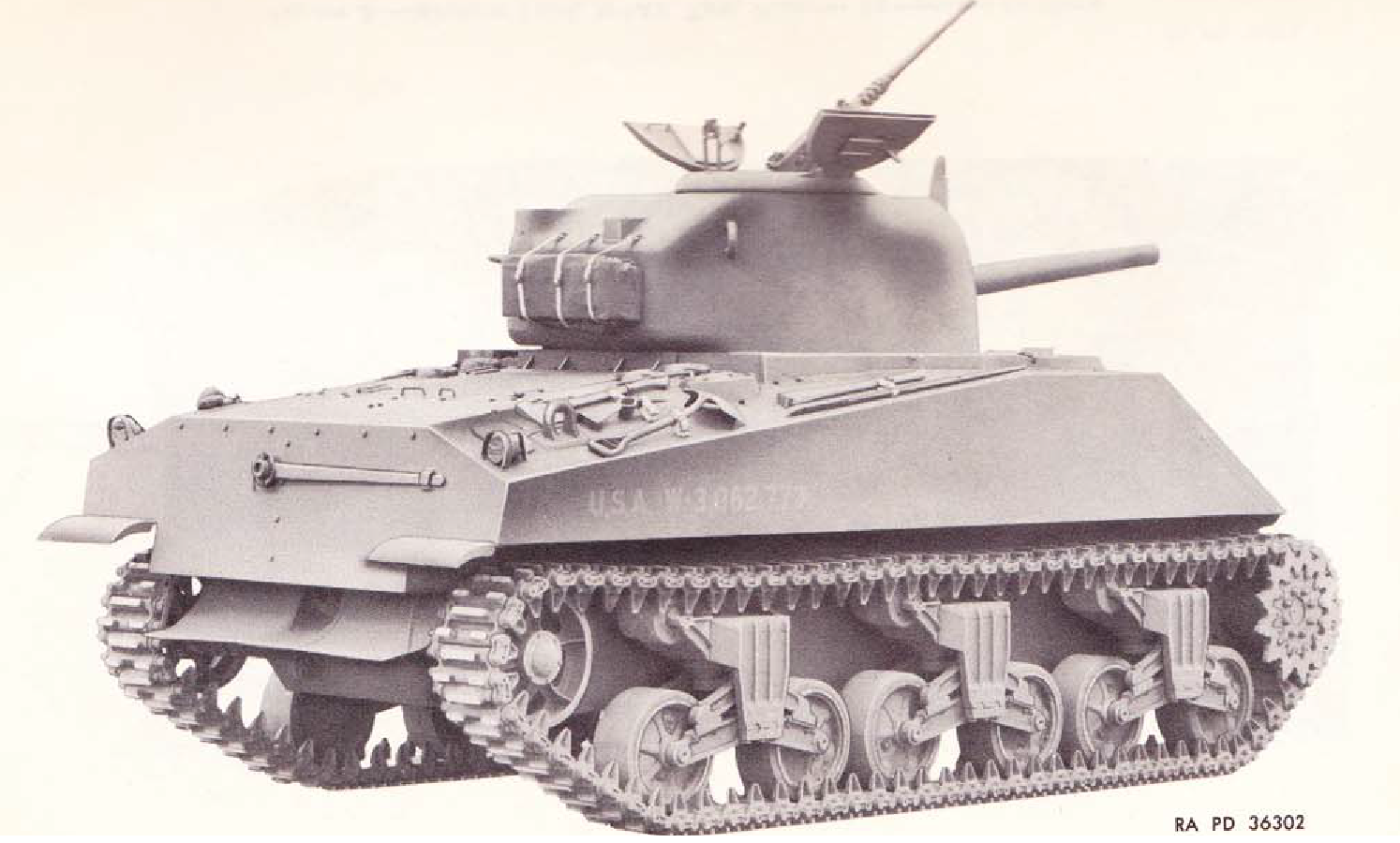
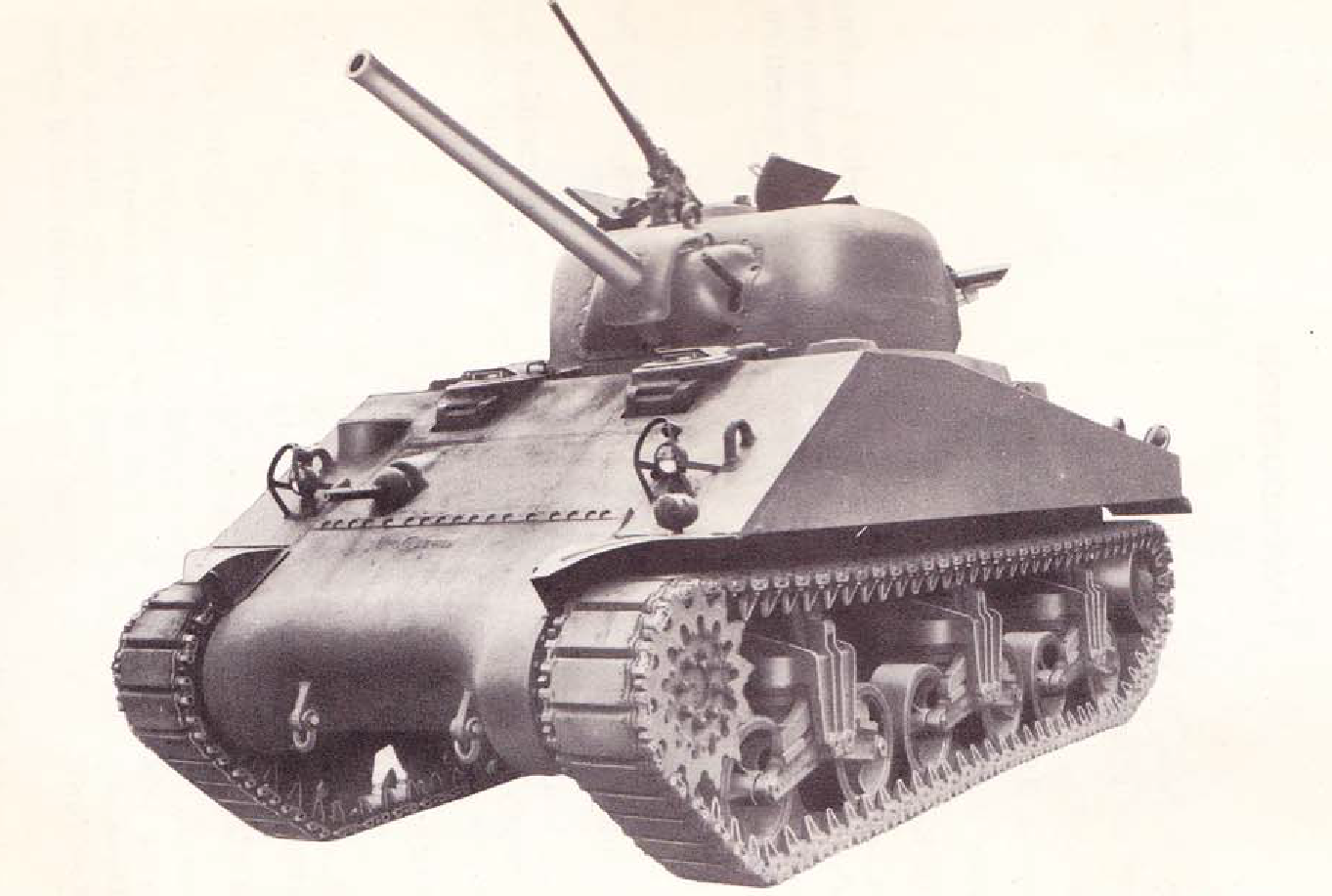
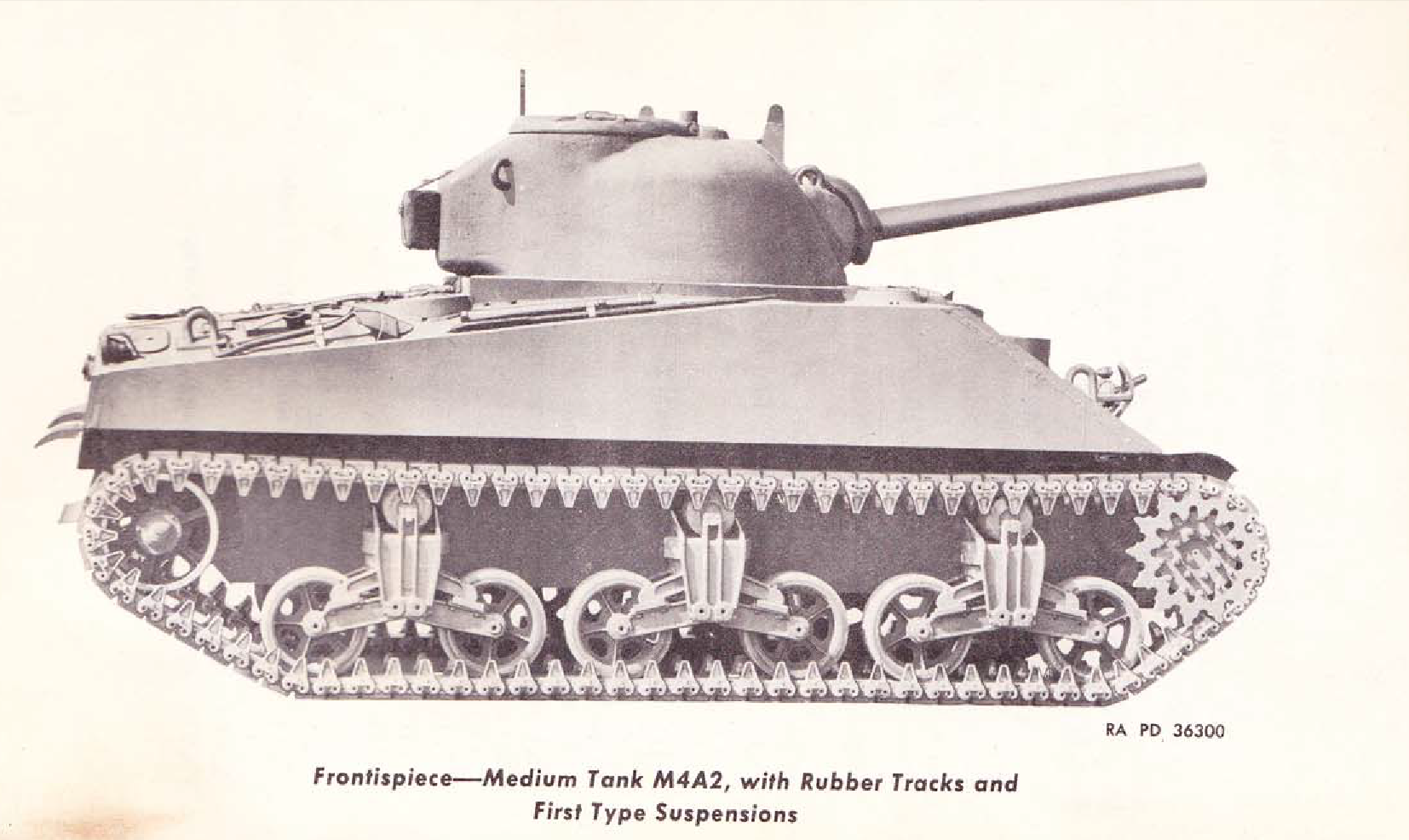
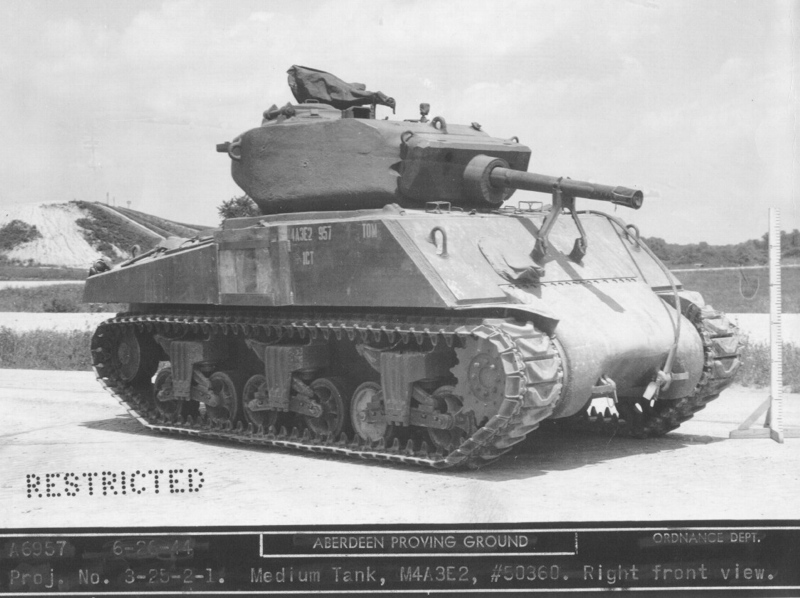
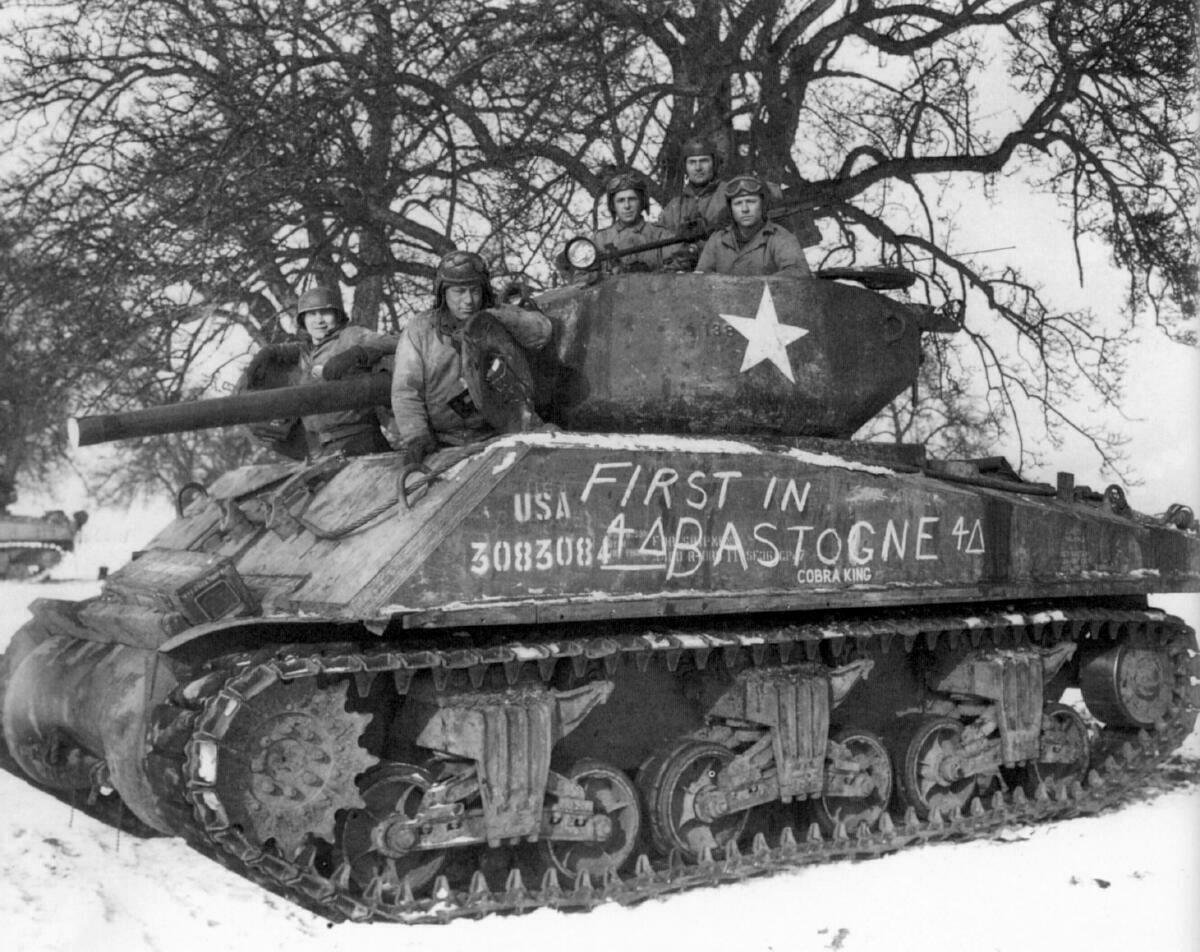
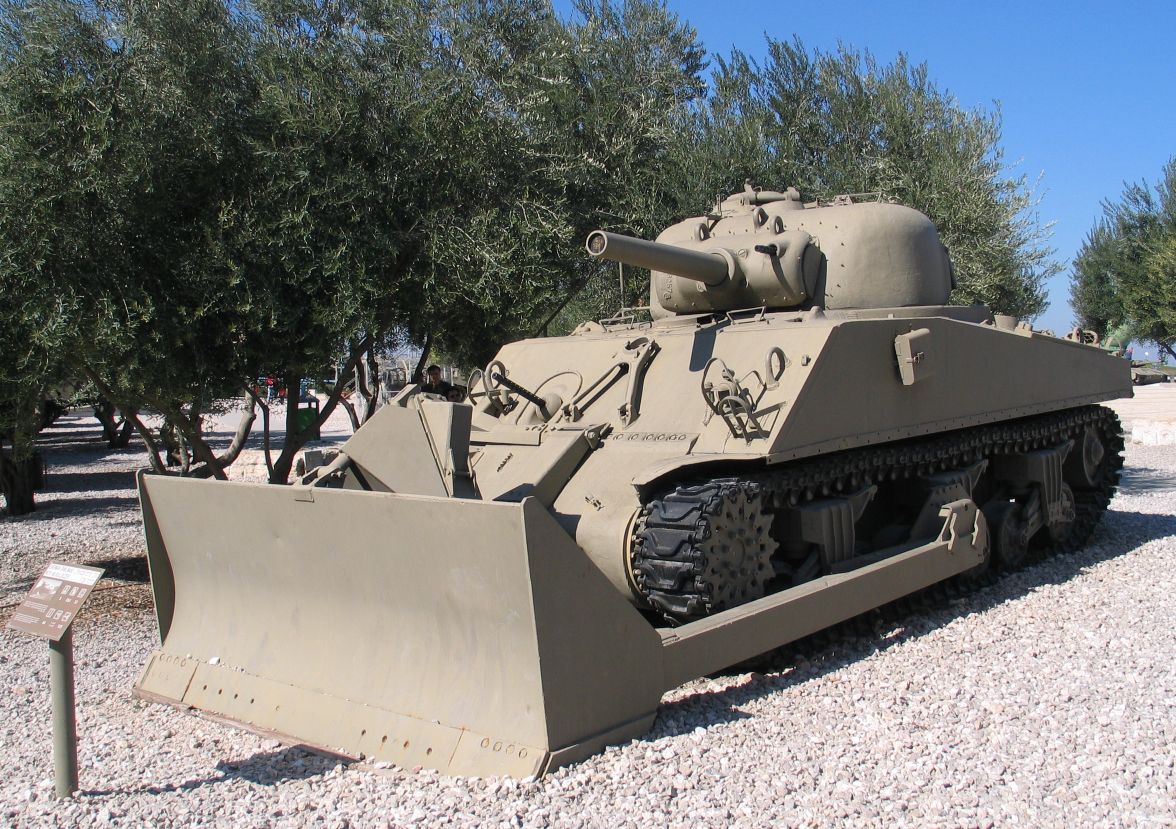
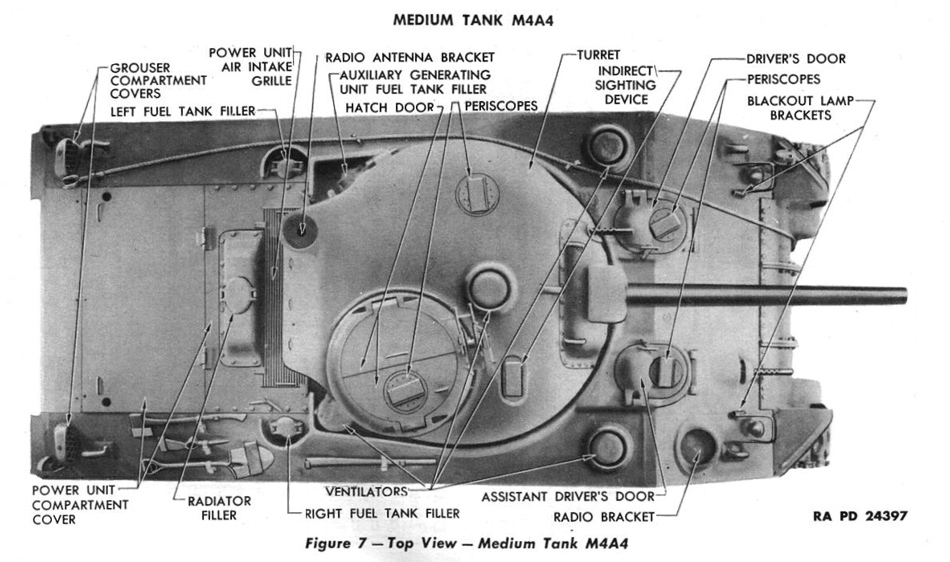
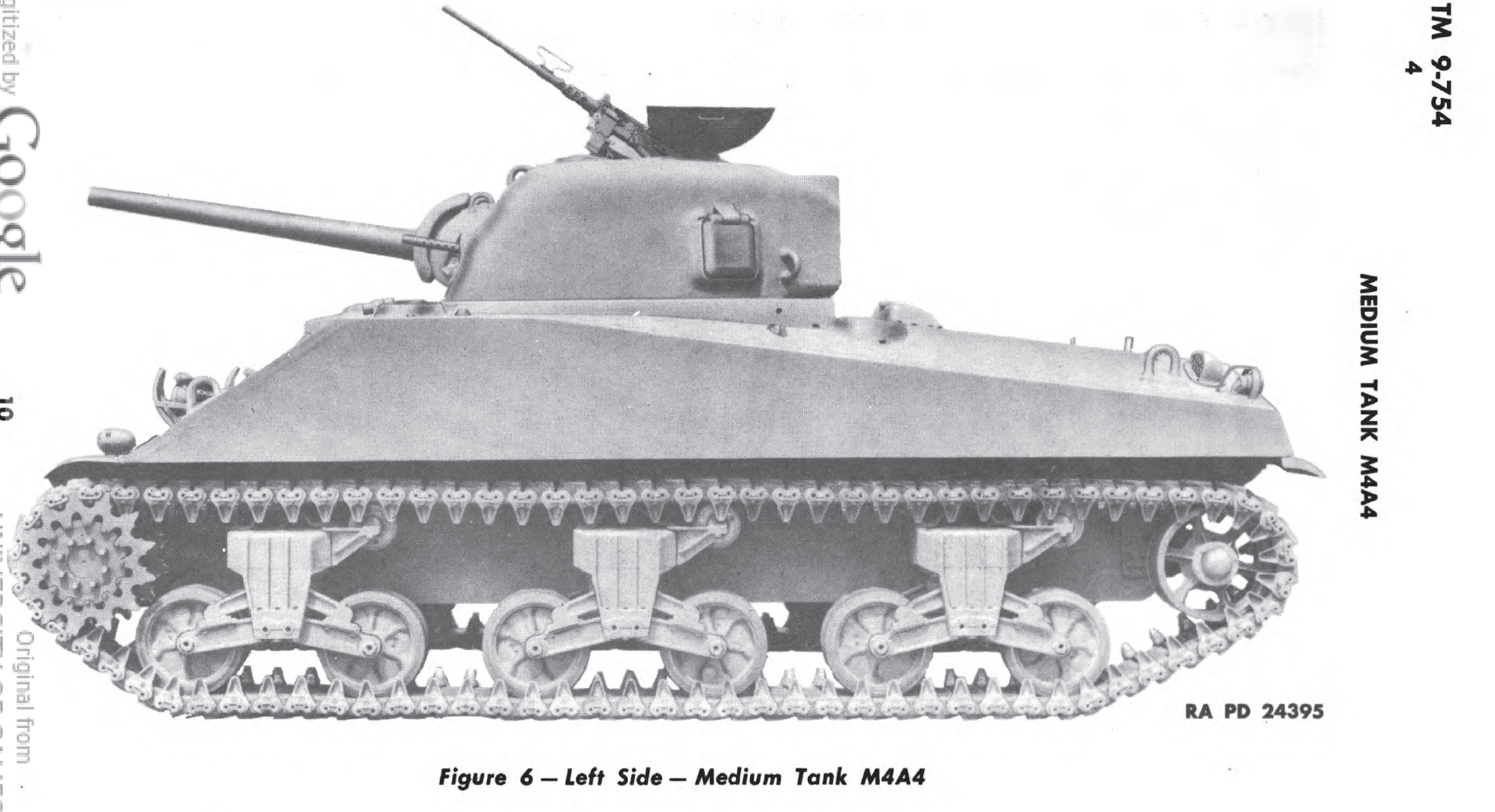
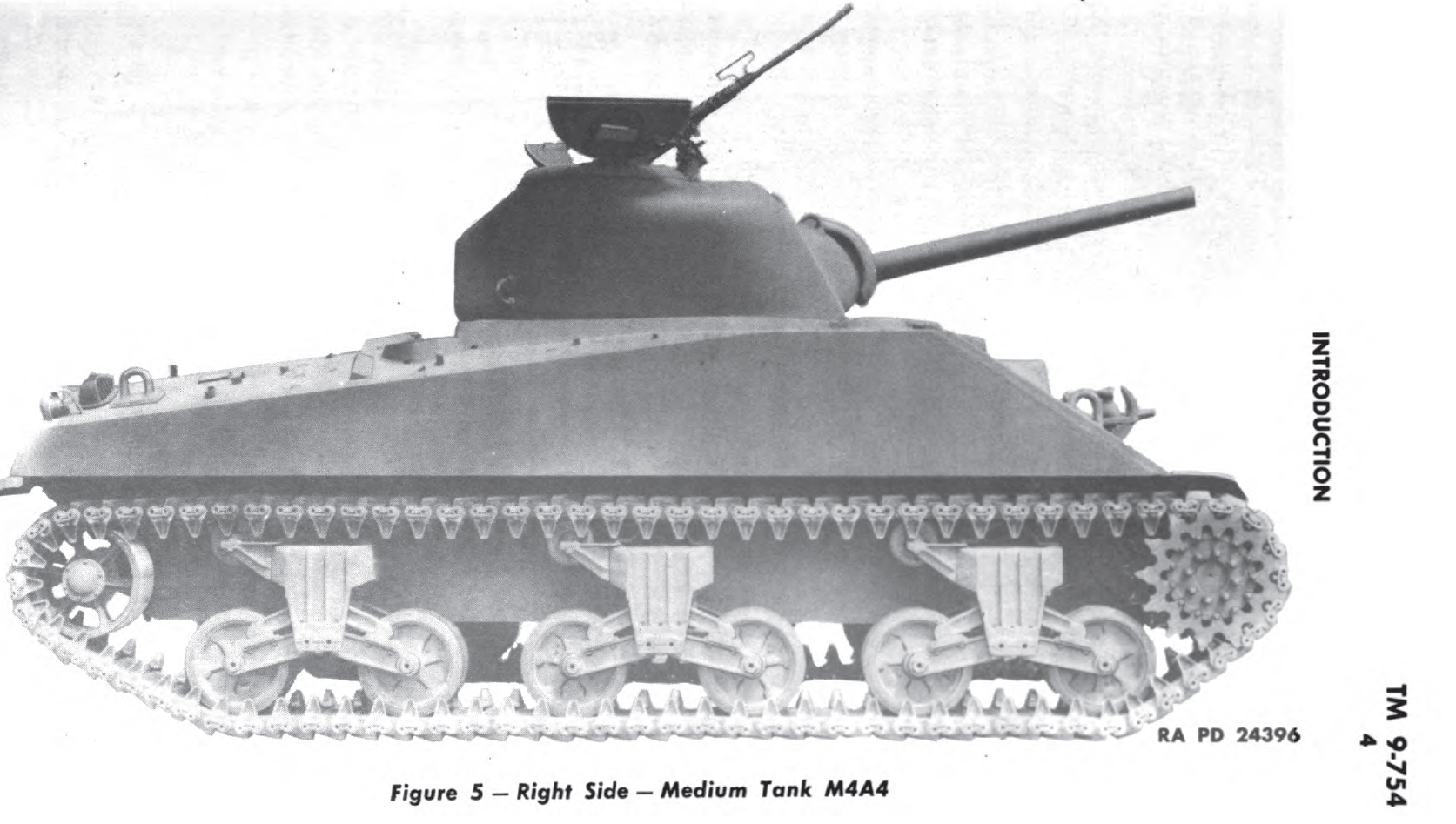
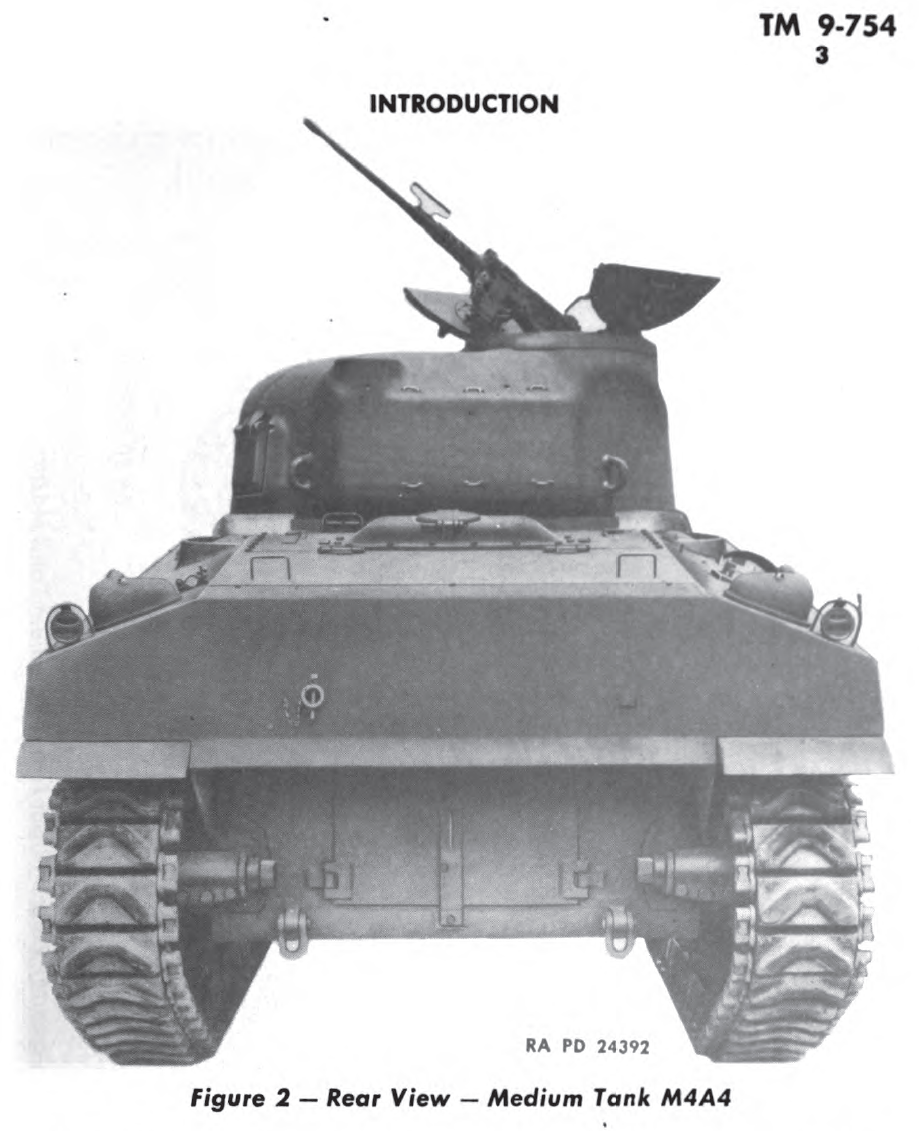
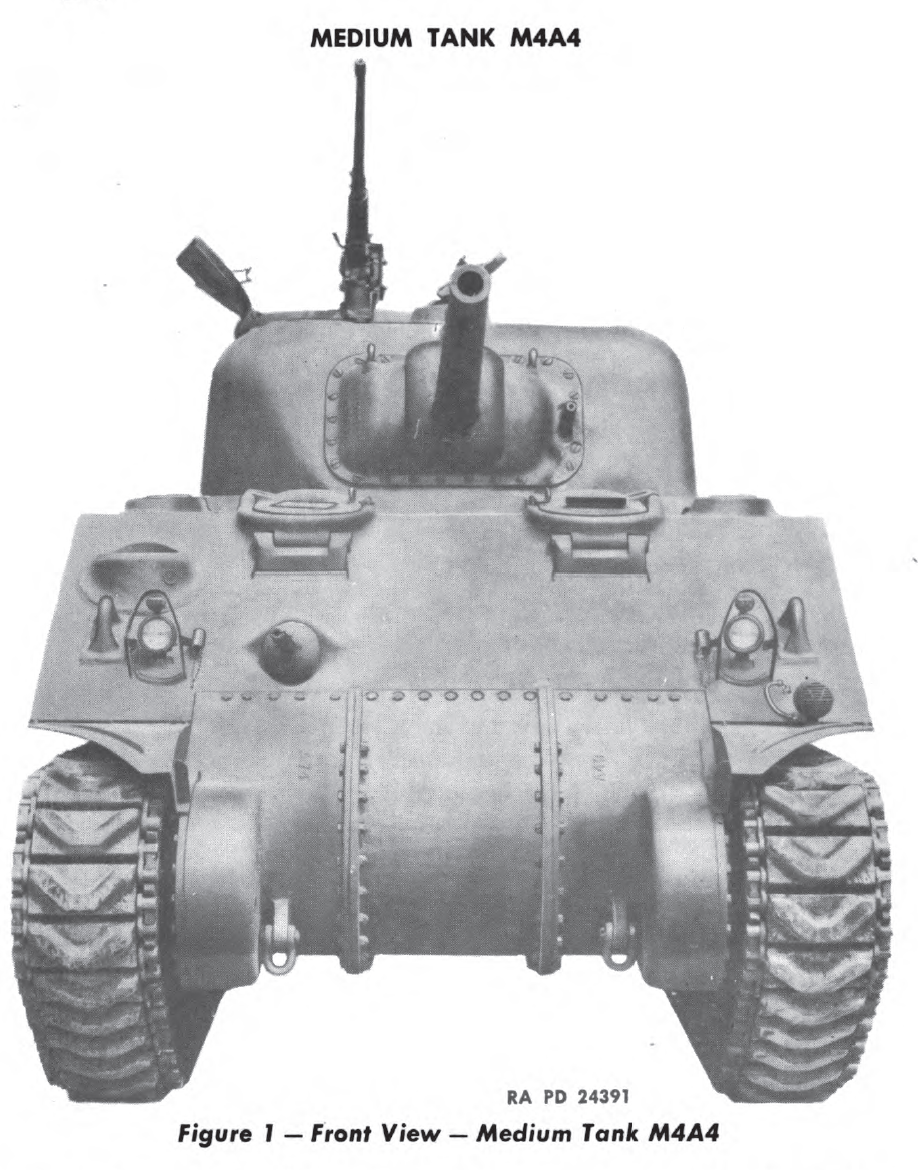
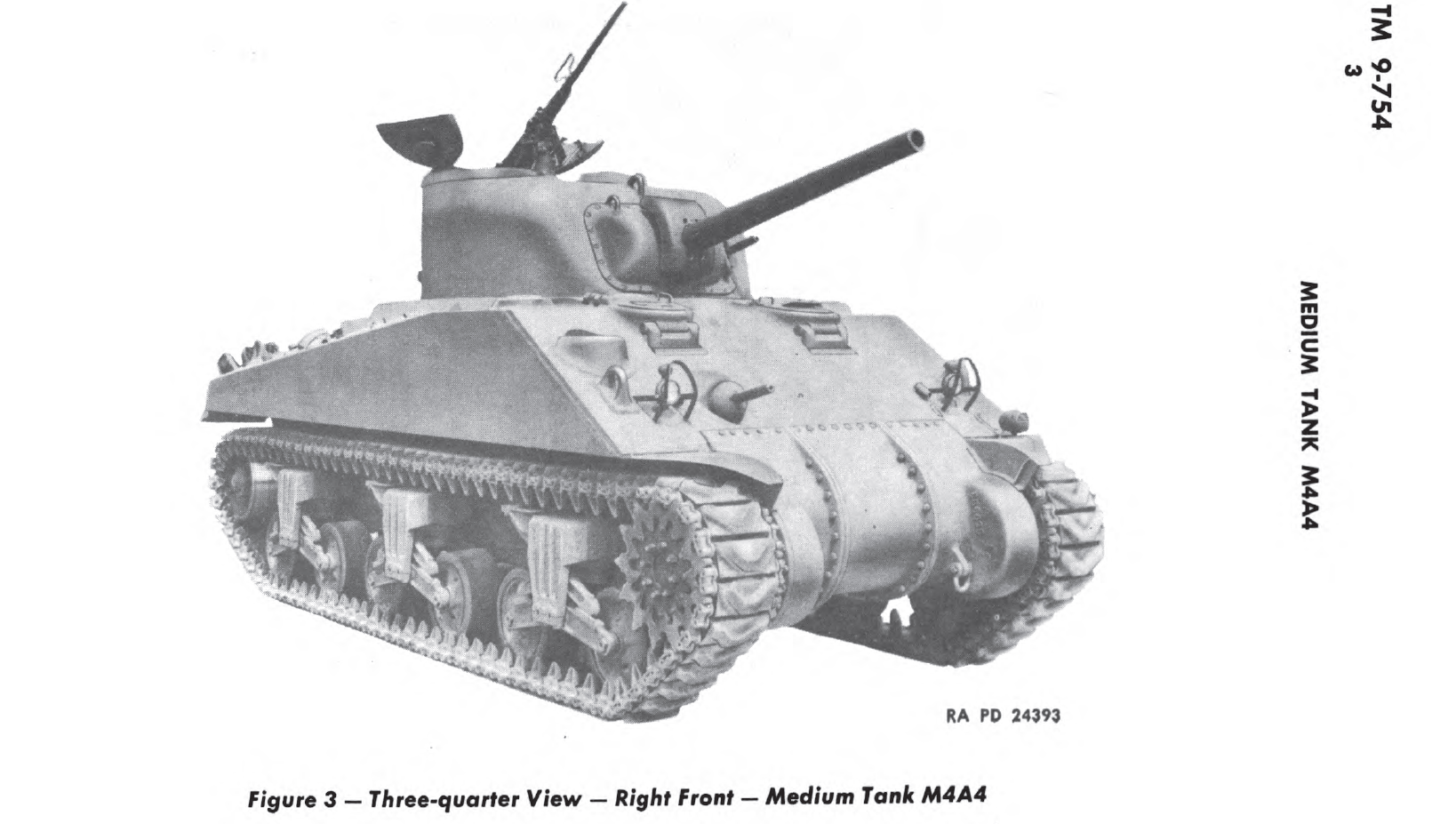

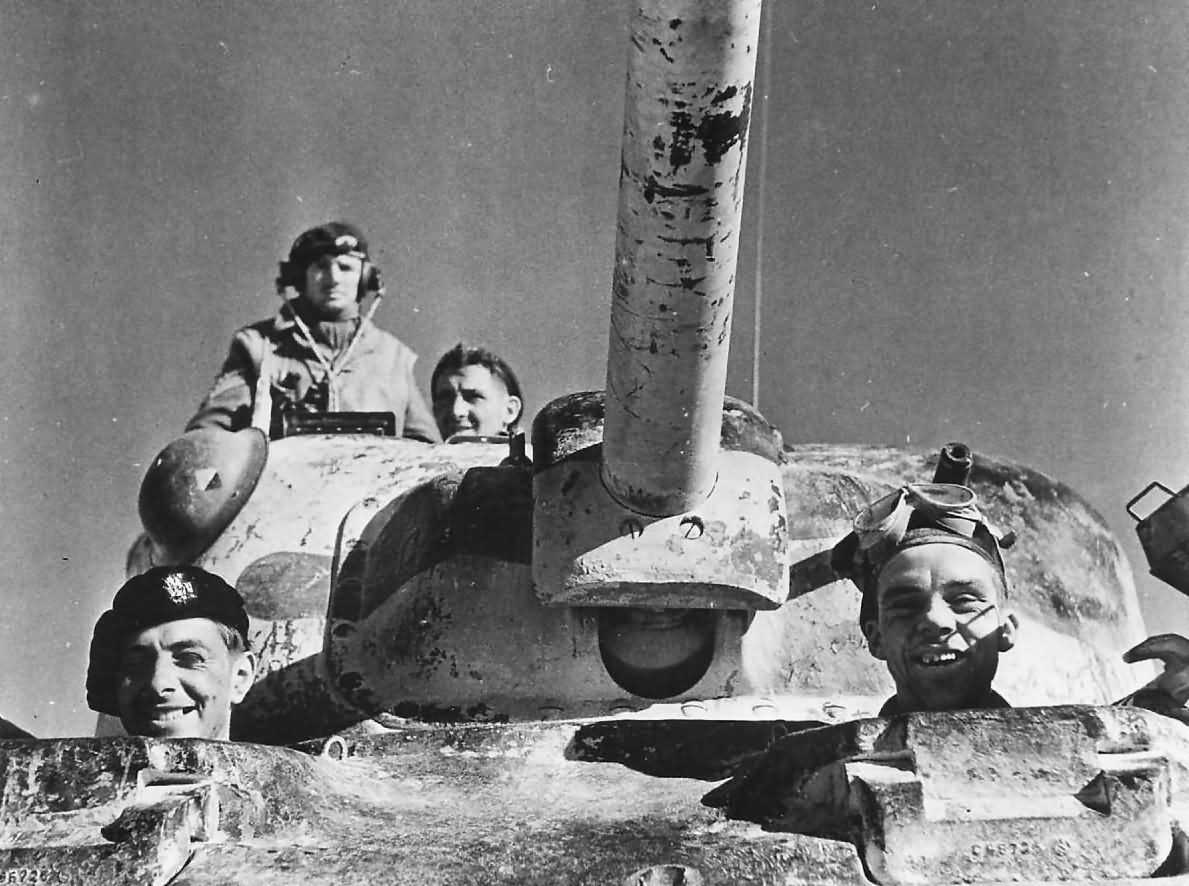
Hi, I know it is not connected with Shermans, but is the one in the Jumbo in the museum photo background a Pz IV J?
I believe that is correct.
What types of Sherman towed M10 ammo trailers, and how common were they?
Thank you for helping people find the information they need. Great stuff as always. Keep up the great work!!!
I have discovered plenty of useful info on your website this page in particular. Thanks for sharing.
I stop and check out the tank on Rock Island Arsenal Memorial Feld it is a M4A3E8(76). It has been repainted so many time I could not read the serial number. The added armor plate on the glacis is cut from a Sherman. When you are up close you see that there a lot more damage. The turret has holes torn in it up high and there is hull damage and the hubs and sprockets on both sides are damaged and suspension parts turn off.
When the weather gets nicer here and it is light out when I leave work at Rock Island Arsenal. I will stop at the monument tank on display in the vehicle and artillery park. And check out the added armor on the glacis. It is in 3 parts and I believe that the upper plate that has the hits on it is cut from the glacis of a Panther tank. if it is it should be 80mm or 3.15 inches thick. if it is from a Sherman it will be 2.5 inches thick. The park area is closed from dusk to dawn and I am on 3hrd shift. So it will need to more in to the spring. I may come in on a Saturday. I will post what I find out. As side not there is also a M22 Locus tank on display too. The display is open to the public as is the arsenal museum. But you now need to apply for a gate pass a head of time to enter Arsenal island. There is a National Cemetery and a Civil war Confederate Cemetery too. Rock Island was a civil war POW camp too.
the monument tank you really want to see is at Rock Island Arsenal. It is an unrestored battle damage tank from the Battle of the Bulge with all the hits painted yellow. This tank was knocked out when a round hit the barrel.
Oldguy
I have a pic of it on here somewhere. It sure is an impressive picture, and I’m glad the Tank has survived all these years!
Nice article. I have a specific Sherman project I am about to embark on. My grandfather was a tank commander in the British 1st Armoured Battalion Coldstream Guards, 5th Brigade, Guards Armoured Division. I have photos of him in his M4A4 (75mm) in NW Europe 1944-45. His squadron was one of the few I know that fitted 60lb typhoon rockets to the turrets (the “Tulip”). I am looking for after market parts and more info/drawings. Anyone with any ideas of where to look would be appreciated – the sheer amount of Sherman information available is quite daunting. Wheel and track variant info especially useful.
Hi Jason. What information or parts are you looking for specifically?
“In some rare cases, large hatch hull, 75mm armed Shermans got produced with normal ammo racks, when the norm for large hatch hull tanks was wet ammo racks.”
Not really rare. All M4 composites had dry stowage and most (all but about 50) of them had large hatches. All M4A2 75mm large-hatch hulls had dry stowage. It’s the M4A3 75mm large-hatch tanks that had wet stoware.
Dan,
Good catch, I’m pretty sure the word doc the whole site is based on has had that section updated and fixed, but sometimes it’s hard keeping track of what got updated on the site or not.
Anyway, thanks for visiting, and the awesome feedback.
Jeeps
Fred,
Thanks for the kind words, and clearly tanks fascinate me too. Thanks for sharing about your dad, I have great admiration for the men who served in WWII.
I hope you stick around and read more, I’ve got over 80k words in content! If you really wanted to geek out on the Sherman you can download all kinds of technical manuals and find out how to clean the air filters on a Sherman!
The Sherman is really an interesting tank, with a very interesting history, and it really has had it’s reputation soiled unfairly by a few very infamous people at this point. It’s particularly sad Death Traps if far better known then Hunnicutt’s Sherman, the book on the tanks development history.
“Death Traps” – the author, Belton Y Cooper was one of the people tasked with recording tank losses and bringing up replacements – he knew about the destruction of Sherman tanks from first-hand experience. His book makes compelling reading. I understand the Sherman tanks reliability and its role in the Allied victory but it was not a good tank, just a tank in plentiful supply.
Hey Ross,
Great post, I guess you missed the review on it, in the books section. It’s always amusing when someone comes along and after reading one, poorly written account, by a soldier who was NOT a tanker, opinion on a tank he never used in combat, and thinks they know the whole story.
Here, read this review by a former Armor officer R. A Forczyk
“Death Traps, a poorly written memoir by Belton Y. Cooper promises much, but delivers little. Cooper served as an ordnance lieutenant in the 3rd Armor Division (3AD), acting as a liaison officer between the Combat Commands and the Division Maintenance Battalion. One of the first rules of memoir writing is to focus on events of which the author has direct experience; instead, Cooper is constantly discussing high-level or distant events of which he was not a witness. Consequently, the book is riddled with mistakes and falsehoods. Furthermore, the author puts his main effort into an over-simplified indictment of the American Sherman tank as a “death trap” that delayed eventual victory in the Second World War.
Cooper’s indictment of the Sherman tank’s inferiority compared to the heavier German Panther and Tiger tanks ignores many important facts. First, the Sherman was designed for mass production and this allowed the Allies to enjoy a 4-1 superiority in numbers. Second, fewer than 50% of the German armor in France in 1944 were Tigers or Panthers. Third, if the German tanks were as deadly as Cooper claims, why did the Germans lose 1,500 tanks in Normandy against about 1,700 Allied tanks? Indeed, Cooper claims that the 3AD lost 648 Shermans in the war, but the division claimed to have destroyed 1,023 German tanks. Clearly, there was no great kill-ratio in the German favor, and the Allies could afford to trade tank-for-tank. Finally, if the Sherman was such a “death trap,” why did the US Army use it later in Korea or the Israelis use it in the 1967 War?
There are a great number of mistakes in this book, beginning with Cooper’s ridiculous claim that General Patton was responsible for delaying the M-26 heavy tank program. Cooper claims that Patton was at a tank demonstration at Tidworth Downs in January 1944 and that, “Patton…insisted that we should downgrade the M26 heavy tank and concentrate on the M4….This turned out to be one of the most disastrous decisions of World War II, and its effect upon the upcoming battle for Western Europe was catastrophic.” Actually, Patton was in Algiers and Italy for most of January 1944, only arriving back in Scotland on 26 January. In fact, it was General McNair of Ground Forces Command, back in the US, who delayed the M-26 program. Cooper sees the M-26 as the panacea for all the US Army’s shortcomings and even claims that the American offensive in November 1944, “would have succeeded if we had had the Pershing” and the resulting American breakthrough could have forestalled the Ardennes offensive and “the war could have ended five months earlier.” This is just sheer nonsense and ignores the logistical and weather problems that doomed that offensive.
Cooper continually discusses events he did not witness and in fact, only about one-third of the book covers his own experiences. Instead of discussing maintenance operations in detail, Cooper opines about everything from U-Boats, to V-2 rockets, to strategic bombing, to the July 20th Plot. He falsely states that, “the British had secured a model of the German enigma decoding machine and were using it to decode German messages.” Cooper writes, “not until July 25, the night before the Saint-Lo breakthrough, was Rommel able to secure the release of the panzer divisions in reserve in the Pas de Clais area.” Actually, Rommel was wounded on 17 July and in a hospital on July 25th. In another chapter, Cooper writes that, “the British had bombed the city [Darmstadt] during a night raid in February,” and “more than 40,000 died in this inferno.” Actually, the RAF bombed Darmstadt on 11 September 1944, killing about 12,000. Dresden was bombed on 13 February 1945, killing about 40,000. Obviously, the author has confused cities and raids.
Even where Cooper is dealing with issues closer to his own experience, he tends to exaggerate or deliver incorrect information. He describes the VII Corps as an “armor corps,” but it was not. Cooper’s description of a counterattack by the German Panzer Lehr division is totally inaccurate; he states that, “July 11 became one of the most critical in the battle of Normandy. The Germans launched a massive counterattack along the Saint-Lo- Saint Jean de Daye highway…” In fact, one under strength German division attacked three US divisions. The Americans lost only 100 casualties, while the Germans suffered 25% armor losses. The Official history calls this attack “a dismal and costly failure.” Cooper wrote that, “Combat Command A…put up a terrific defense in the vicinity of Saint Jean de Daye…” but actually it was CCB, since CCA in reserve. On another occasion, Cooper claims that his unit received the 60,000th Sherman produced, but official records indicate that only 49,234 of all models were built. Cooper claims that the 3rd Armored Division had 17,000 soldiers, but the authorized strength was about 14,500. Can’t this guy remember anything correctly?
Cooper’s description of the death of MGN Rose is virtually plagiarized from the official history and a number of articles in ARMOR magazine in the past decade reveal that Rose was an extreme risk-taker. Reading “Death Traps,” the uninitiated may actually believe that the US Army was badly defeated in Europe. Cooper even claims that, as the 3rd Armored Division approached the Elbe River in the last days of the war that, “with our division spread out and opposed by three new divisions, our situation was critical.” If anybody’s situation was critical in April 1945, it was Germany’s. Actually, the 3rd Armored Division had one key weakness not noted by Cooper, namely the shortage of infantry. The division had a poor ratio of 2:1 between tanks and infantry, and this deficiency often required the 3AD to borrow an infantry RCT from other units. While the much-maligned Sherman tank was far from perfect, it did the job it was designed for, a fact that is missed by this author.”
Or if that’s not enough, read this, by Lieutenant
, a man who used the Sherman in combat.
Tank Versus Tank
“The American tank is not nearly as good as the German tank.”
“Next to the German and Russian tanks, the American tanks are the best in the world.”
Quotations, opinions, and comments similar to the two above, which have been widely publicized and caused widespread discussion, have been made by various individuals.
Because they have, to a certain degree, jumped to hasty conclusions, and because they have helped fashion many erroneous conceptions, I shall attempt in this article to present considerations which they have apparently overlooked and which may change the outlook of many on American tanks.
In making those statements, what standards did the persons involved use?
What were the items and factors that they utilized in making their comparisons?
If they used simply the gun, the weight of the tank, and the width of the track and thereby the floatation of the tank as criterion, as I am sure they did, then I heartily concur with them that the German Tiger tank is unquestionably superior to the American Sherman tank.
TIGER2.JPG
The German Tiger tank (above) had a more powerful main gun, heavier armor, and wider tracks than the American Sherman tank (below).
SHERMAN1_V2.JPG
The German 88 is more powerful than any American tank gun used during the course of most of the war.
The German tank is much heavier and therefore its armor is much thicker than that of any American tank.
The tracks of the former are much wider, with perhaps a less vulnerable suspension system than that of the latter.
If I stop here, as I am convinced so many have, there is no question but that the German tank is a much better one than our own. In this paragraph there is material, indeed, for some sensational headlines in newspapers in the States.
Today, however, let us not stop here. Let us go on!
What is the fuel capacity of the German Tiger tank? How long and how far is it able to run on a tank full of gasoline? Does it burn much oil?
What is the composition and life of its tracks? How many rounds of ammunition is it able to stow? What is the life (discounting its being hit in action) of a Tiger tank?
Is its engine comparatively free of maintenance problems? If maintenance problems occur, are they easy to remedy? How long and how much skill is required to change an engine?
Is the German tank able to move for long distances and continuous periods at a steady rate of speed? How is its endurance?
Could 53 Tiger tanks, for instance, move from the vicinity of Fenetrange, France, in the Saar, to an area near Bastogne, Belgium, a distance of 151 miles, in less than twenty-four hours to answer a fire call, as did tanks of the Fourth Armored Division?
Could a German Tiger tank be used for weeks of training in England, land in France and fight across the widest part of that country to the German frontier, race back to Belgium, retrace its steps again to the German border, and fight its way well into that country before being replaced?
Could a German tank roll for several hours at a speed of twenty-five miles per hour in exploiting a breakthrough?
Did it occur to the critics of the American tank that perhaps questions like those listed above, the answer to which will all heavily favor the American tank, and many others like them should be considered before a decision is reached? Obviously not.
I say most emphatically that such factors must be included before a thorough, honest, and fair comparison can be made and a sound and intelligent conclusion reached.
In addition to those just cited, items to be remembered, as well, are tactics employed and required respectively by the Germans and Americans, missions involved, and number of tanks on hand for the operations.
To create a true picture of the weaknesses and strengths of the tanks being compared, those things take their places in the line of factors necessary to be examined.
On 6 June 1944 and for many days afterward, while the Germans had the Mark V Panther with a 75mm gun and a Mark VI Tiger with an 88mm gun, the American Army was equipped with the M-4A1 tank, or the Sherman, as it is popularly known.
It will be unnecessary in this article to list all the specifications of that tank except to say that it weighed approximately thirty tons and had a 75mm gun.
Its tracks were narrow and consisted of three different types: steel, flat rubber and rubber chevron.
During the initial period in Normandy just after the invasion, when engagements were toe-to-toe slugfests, battles with tanks fighting tanks were common.
Soon, however, the deadlock broke and American tanks streaked to and through Avranches and hustled across Brittany.
Without stopping for breath, the tanks continued on their way across most of France.
In order to keep rolling over hot roads for long, dusty miles for days on end, a light, mobile tank was needed which the terribly extended supply line could adequately furnish with precious gasoline.
To withstand the terrific beating the tank was taking hour after hour, it was necessary for it to have a simple yet tough and efficient engine and mechanical system.
The fact that the American tanks rolled with but few maintenance problems, and those rapidly attended to by the tank crew alone or by company, battalion, or division maintenance, all of which were close enough behind to repair the vehicle rapidly and send it immediately back into action, testifies to the excellence of the tank.
Thus, tank units were still at full tank strength and functioning efficiently when they reached as far east as the Meuse River early in September after moving and fighting consistently day after day from the Normandy peninsula.
They stopped then only because they had moved too fast and too far and were forced to wait a few days until their supplies could reach them in large enough quantities to send them ahead again.
During that phase of operations, a group of tanks had made a forced march of 258 miles in 38 hours and arrived in good enough shape to have continued on had the situation warranted it.
In discussing tanks, many forget that the tank is not a vehicle built primarily to fight other tanks.
Rather, its mission above all others is to get into the enemy’s rear areas, to disorganize him, to destroy supply and communications, and generally to wreck havoc there.
This is done mainly with its 30-caliber machine guns, especially the one mounted co-axially, and with high explosive fire from the tank cannon.
The tank cannon’s chief function, however, is to protect the tank while it is disrupting, exploiting, and destroying the enemy.
Of course, very, very often a few well-placed shots from the tank cannon will be much more effective than the 30-caliber machine guns, and therefore the cannon is used very frequently in offensive action.
The tank served its primary mission gloriously in that dash through France.
Its opponent was dazed, disorganized, and on the run.
Most of his equipment was “thin skinned,” and was “duck soup” for our tanks.
The 30-caliber fire and 75mm high-explosive fire, for good measure, was plenty good enough to leave much of the German Army equipment and personnel strewn by the wayside.
A factor rarely considered, yet on occasion vitally important, is the type of bridge that a Sherman can use to cross a stream or river.
Many bridges that are adequate for the American tank pose a knotty problem for the German tank.
The bridge would have to be much wider and much stronger, and would require a great deal of time and more facilities to construct.
Many bridges intact and able to accommodate the lighter American tank would deny passage to the heavy, lumbering Tiger.
Hardly a critical word was heard concerning the American tank in those days.
The reason obviously was that it was plenty good for the task at hand.
The tank was accomplishing an ideal tank mission in a superior fashion, and it seemed to have been built for just that kind of job.
During the summer and fall of 1944, the Sherman performed to perfection and brought the Allied armies within scent of the German frontier.
It was late in 1944 that the American tank became the target for taunts and criticism.
Forgotten quickly were the results it had gained just a month or two before.
In October, November, and December the ground became a sticky morass; the war was stabilized and no great advances were being made.
The war was bloody and difficult, slow and discouraging.
For every yard wrested from the enemy, tremendous effort had to be exerted.
During this stage of the war, the tanks could not perform as they had earlier.
Rather, they were forced to fight tank versus tank.
Here the German had a tremendous advantage.
He was fighting a defensive warfare. The terrain was admirably suited for him.
It was rough, and this enabled him to pick the key terrain features on which to post his men and vehicles.
The ground was so muddy that advancing, attacking elements could not maneuver, could not outflank.
They had to slug it out toe-to-toe, face-to-face.
Without a doubt the tank of the Germans was ideally suited for such a fortunate turn in the war for them.
The tank could pick dominating ground, and with its huge gun and thick armor proved to be a roving pillbox par excellence.
On many occasions it picked off American tanks as they floundered in the mud in an effort to gain valuable ground and dislodge their adversary.
It was during those trying days that many an American tanker and those that observed him began to lose faith in the Sherman.
The tanker was forced to move very slowly because of the muck, and very, very often spotted a German tank, fired first, and scored a hit only to see his 75mm shot glance off the enemy tank causing absolutely no damage to it.
The 75mm gun proved to be comparatively ineffective during this chapter of the war.
At 1,000 yards to 1,500 yards it could be effective, and a single tank has knocked out five Panther tanks with six shots.
PANTHER_TANK_2_V1.JPG
An American soldier inspects a German Panther tank, c. 1944.
Yet to get that close to a German tank made the Sherman vulnerable indeed.
Many tanks were lost in endeavoring to get close in, which was necessary in order for them to strike a telling blow.
The absence of an effective armor-piercing shell proved to be a terrific handicap, as well.
Thus, during that siege, the American tank was impotent when running into the German tank head-on.
As a result, many a Sherman was lost even after it had shot first and scored the first hit.
That was when the seeds of dissatisfaction in the American tank were sown and when much faith was lost.
It must be remembered that the German tank had everything its way.
It was fighting a defensive game, the terrain was in its favor, and the wet ground played into its hands.
Still, it must not be forgotten that though the cards were stacked against the American tank, it defeated the enemy and gained the desired ground.
Though the Shermans were easily bested tank for tank, they could always bank on a numerical superiority, which fact was considered in tactics and strategy employed.
By banding together and maneuvering, they were able to dislodge and knock out the heavier German tank.
Even during those days, one German tank knocked out for one American tank was a poor score.
It was in most cases three-to-one, four-to-one, and five-to-one in favor of our side.
One must not forget that the German requirements and our own were totally different.
They were fighting a slow war, a defensive war where they picked their spots.
They had fewer tanks than we, so their tactics, of necessity, had to be different.
We were fighting an offensive war, we were hurrying to get it over with, we wanted to shake loose, and we had many tanks with which to do it.
Virtually never did a scrap take place with fifty German tanks against fifty American or twenty against twenty.
The proportion was usually five American to one German, even ten to one, rarely if ever less than two to one.
So it must be made clear to anyone comparing the tanks of the two nations that, as I said before, throughout the campaigns the requirements and needs were different.
We could not use nor did we want a lumbering, heavy, mobile pillbox type of tank, and we could not have done what we did if we were so equipped.
Then again we had numbers upon which to fall back, and we considered that in our tactics.
Mechanically we had a tank that performed superbly, and after groaning and grunting through heavy, sticky mud for weeks on end, it was still running at the end of this phase.
There is no denying that in those hectic days a tank such as our newest Sherman with a wider track and a more potent gun would have saved many American lives and would have knocked out more enemy tanks, and more quickly, too.
During that period, and that period alone, was the American tank discredited, criticized, and found lacking. The situation was hastily remedied, but for many it was a little late.
VEHICLE_SHERMAN13.JPG
‘It must not be forgotten that though the cards were stacked against the American tank, it defeated the enemy and gained the desired ground,’ Irzyk wrote.
The closing days of 1944 and the early part of 1945 found a new type Sherman joining the ranks of American tanks and replacing its tired brothers.
Although it has no additional armor and weighs but a ton or two more, it arrived on the scene with a potent, long tubed 76mm gun with a muzzle break and high muzzle velocity that makes it effective at much longer ranges than the 75mm. As a result, it is not necessary for the new tank to get as close in as the old tank before becoming effective.
A new type, high-velocity, armor-piercing shell was added for the gun and gives it far greater penetrating qualities.
The new tank has an engine with higher horsepower which, in addition to an increase in power, makes it capable of higher speeds.
Its track is much wider and has a new type track suspension system which gives it more stability and cross-country mobility with which to combat adverse ground conditions.
The tank has the traditional endurance of American tanks and rolls consistently for endless miles.
It goes ninety miles and often more on a tankful of gasoline.
The tank is characteristically simple, as such equipment goes, and the tank crew alone is able to maintain its vehicle for long periods.
New men in tank crews catch on to their jobs quickly, which is one important factor in making our tank crews superior to those of the Germans and explains why our armor operated most of the time at top-notch efficiency.
One last advantage, though minor in discussion, was extremely valuable to the tank crew – the turret with two hatches.
Also, the new Sherman, like the old, had the potent 50-caliber anti-aircraft gun which proved so effective against enemy planes and which played havoc with dug-in Germans.
All in all, the new type Sherman is a marvelous tank.
It answered the prayers of the tankers and was on hand to drop a curtain on one of the dirtiest and hardest phases of the European war.
It was the new tank with the all the advantages of the old one and many new qualities that did the racing in Germany, Austria, and Czechoslovakia, and finished the war in a blaze of glory.
Mounted in that tank, no American tanker, was afraid to take on any tank that faced him. If only the new type tank could have been produced and brought to the front lines sooner!
German tanks, on the other hand, are not what they are cracked up to be.
Their heavy armor was a hindrance rather than an asset. The tanks could not carry on the same kind of offensive warfare that our tanks did.
With their heavy armor and complicated mechanism, they were tank destroyers and not tanks.
Even though the German tanks were much heavier and thicker than ours, their armor was centralized.
Most of it was on the front slope plate and turret. Sides and rear were often vulnerable, and how we capitalized on that!
The armor on German tanks was generally poor. It often cracked on impact, leaving ragged, gaping holes, whereas the holes in our tanks were clean, circular, and easily repairable.
The Germans developed a gun with a high muzzle velocity and an effective armor-piercing projectile. To do this they sacrificed space in the tank, for they had to increase the size of the shell and thus could not stow many rounds.
It must be mentioned that once again the Germans lost sight of the purpose and function of a tank and thought primarily of destroying other tanks.
Still, though our muzzle velocity was less than theirs, our high-explosive fire was just as effective.
Of the two, the high-explosive fire was for us the more important consideration.
The mechanical advantages of the German tank over our own were few.
The interiors of their tanks were not nearly as well equipped as ours, and it looked altogether too much maintenance to keep a German tank rolling.
Still another item often overlooked is that it was necessary for us to carry an adequate basic load of ammunition and gasoline in our tanks, for to replace what we used we had to call upon trucks that had to travel over a long, dangerous supply route.
The Germans, on the other hand, sat close in many of their defensive positions to their ammunition and other supply.
It might astonish some to know that prisoners of war claimed that some of their large tanks had a running time of a mere two and a half hours on a full vehicular load of gasoline.
Thus, the tanks did not have the endurance nor the cruising ranges of our tanks.
Therefore, in many instances they had to be transported by rail virtually to the front lines, unloaded, and put into the battle. How far could we have gone with our tanks if we had to follow a procedure like that?
Not yet mentioned is the power traverse with which American tanks are equipped.
It is one of the very important reasons why so many of our tanks bested the German tanks. Of course, it may have been that our gunners and car commanders were superior to the Germans, and that the excellence of our tankers provided us with the upper hand.
We agree to that, yet it is felt that of inestimable advantage to our tankers was the distinct handicap under which the German tankers labored because of a lack of a 360 degree power traverse comparable to ours.
Because of that important disadvantage, they were slow firing and in many cases got off one round to our three or four. Instances have occurred where a Tiger tank lay hidden, waited in ambush, and fired the first shot at advancing American tanks and missed!
The mistake was fatal, for American tanks maneuvered about it and with their rapid fire destroyed the German tank.
VS.JPG
A captured Tiger tank stands alongside a Sherman tank with the 4th Armored Brigade. The size and weight of the Tiger proved as much a hindrance as a help.
By means of the 360 degree power turret traverse with which all our tanks are equipped, a tank gunner is able to swing his gun in any direction in a second or a fraction thereof.
The average American tank gunner can lay on a German tank, is able to get the first round off, and can usually score the first hit. The power traverse enabled American tanks to move down roads at high speeds shooting from one side of the road to the other.
In this manner enemy infantrymen and bazooka teams were killed or pinned down as the tanks rolled by.
The power traverse has been such an advantage and of so much importance that it is immeasurable.
At the moment, virtually every tank battalion is nearly equipped with the new type Sherman tank technically called the M4A3-E8.
Of all the tanks operating today, that one, in my estimation, is the best there is. I would chose it above all the others.
Many, many experienced combat tankers feel exactly as I do.
The tank will go faster and will live longer than the German Tiger.
The Sherman burns less gas and oil and as a result is able to go much farther on a tank full of gasoline.
Its maintenance problems are few and far between and are easily remedied.
It is an easy matter to change an engine, which takes little more than four hours and which beats all hollow the best time for the Germans.
It has a good gun, and good ammunition for it. It does not take much to tow one of our tanks that is disabled, but a huge vehicle is required for the German Tiger, and often German tanks had to be abandoned because huge vehicles were not available.
Yes, considering all factors, I believe that even the most prejudiced or the one most difficult to convince will nod toward the Sherman.
The Sherman must give ground to the Tiger when the size of the gun and the thickness of the armor is considered.
The tanker knows and takes for granted that if his tank is hit by an 88 it will be penetrated.
He also knows that the addition of a few tons of armor will not stop an 88.
He respects, and always will, the German gun and the thick armor, but he will never swap his tank for those advantages.
To build a tank that would stop an 88 shell would be to lose a tank and gain a lumbering steel pillbox with no mobility left. It has been said, practically speaking, that the only thing that will stop an 88 is “Cease fire.”
Similarly, to stop our 76 with high-velocity armor-piercing ammunition, the enemy will need a mighty heavy tank, indeed.
Once again, let us not forget that the Americans fought an offensive, fast, deceptive, and winning war.
We crushed our adversary; therefore the tanks which spearheaded the victories must have been good. Tank-for-tank, toe-to-toe, we were outclassed.
But that was not our way of fighting.
For the person still not convinced I suggest that he tabulate the count of American tanks knocked out by German tanks and vice versa, and I am sure that he will discover, perhaps to his amazement, that the scale will swing heavily in our favor.
Not long before the curtain dropped on hostilities in Europe, the American General Pershing tank made its bow.
It has a 90mm gun, weighs forty-six tons, has a different suspension system, and has a low silhouette. It is said that here is a tank that incorporates all the advantages of the Sherman tank and with its new additions makes it superior to the German Tiger in every respect.
As far as my personal knowledge goes, I must reserve my opinion until later, for that tank is comparatively untried.
I will say to the persons that have so glibly sold our tank down the river that there is more to it than meets the eye.
I agree with a lot of that, but a lot of it is clearly taken directly from Wartime propaganda, so isn’t exactly a great source. I mean, from that you’d think that the 76mm M4 was a new invention they came up with to meet the need in late 1944, rather than a weapon that existed prior to D-Day. They intentionally decided they didn’t WANT the 76mm gun M4! Obviously they aren’t going to tell the folks at home about that later on when they change their minds. however, I do agree that they had good reason for choosing to stick with the 75mm at the time.
The M4 was an excellent tank, I don’t care what muckrakers like Cooper have to say about it. As a one-on-one tank vs tank fighter, it came up sort to the Panther or Tiger, but in every other area of being a tank it was the superior weapon. Panthers and Tigers were severely flawed themselves; a tank does not (or did not) exist just for destroying other tanks.
Even if you want to totally ignore all that and just rate all the tanks of WWII based on how good they were at fighting other tanks, ignoring all other factors such as mobility between battlefields, cost of manufacture, ease of repair, effectiveness of HE round, etc, etc, you will STILL find that the M4 is among the best tanks of the war. Yes, even as a tank-on-tank killer. Yes, the Tiger and Panther were more deadly in a one-on-one fight: this does not make it a “lousy tank” and a “deathtrap”. Compared to a Churchill, a Ha-Go, a Renault R35, or any Italian tank, its still better. Much better. If the British could have just used used one of their own tanks, they wouldn’t have equipped themselves largely with Shermans. There were literally dozens of types of tanks (often very obscure, obsolete types) that saw combat between 1939 and 1946 that were clearly far inferior to the Sherman, and only a handful that were arguably better, yet its the M4 that gets all the hate.
The T-34 was probably better than the Sherman in combat; the KV series probably not (overall). The Pz. IV was barely an equivalent. Thus the Sherman was among the best even if you want to believe all the bad things about it; or would you (Sherman haters) really try to have us believe we’d all have been better off building a lot of Crusader tanks and using those instead? Because, after all, the M4 is a “deathtrap” and ANYTHING must be better than that, right? Funny I don’t ever hear people bitching about tanks that are clearly INFERIOR to the Sherman and calling THEM deathtraps. Strange how that works.
The Germans would have been better of producing zero Tigers and zero Panthers. Instead, put the resources into making more PZIV (a proven platform for them) and Stug III. Stick to those two types in their defensive war from 43-45 and it would have gone better for them; at least on the AFV front.
I agree, and I think I mention it in a post here somewhere!
they should have come up with a program to modernize the PIVs suspension and eliminating all the welding the hull and turret required as well.
Cooper is an idiot. He is just raking muck because he knows it sells books. Most of his points are totally invalid when not totally wrong to start with. “I saw lots of wrecked Shermans, and the Germans only lost X many tanks therefore it was a poor tank” is not a good argument. It ignores what wrecked them, and how, and when, and that the Germans didn’t HAVE many tanks to destroy at the time. Most tank losses were to AT fire, not other tanks, and the enemy just didn’t give us that many targets to destroy; we gave them plenty. Could the US have built a better tank? Probably. Was it the T-26, and would it have done anything to advance the war or save lives? I really doubt it. Maybe Cooper actually believes his fiction, but I doubt it. I think he just knew what would get the American public worked up and sell books; noting like a good scandal and story about incompetents in charge sacrificing American lives…but we’ll make the real villain the TANK so as to avoid trodding on too many toes…
what a great article, I applaud you!!! I am boomer getting older. I’ve always been interested in our military, but did not serve. the army wouldn’t take me because of severe asthma.
Tanks fascinate me, all that thought going into one is truly amazing.
My dad, spent a little over 3 years in Italy during the war. He enlisted the day after Pearl and went to N. Africa for a few months before he was sent to Italy, where he remained until the end of the war. He was in the infantry and occasionally talked about his experiences when I was a kid.
Usually I don’t learn article on blogs, but I wojld like to say that this write-up very forced me to try
and do so! Yoour writing style has been amazed me.Thank you, quite nice article.